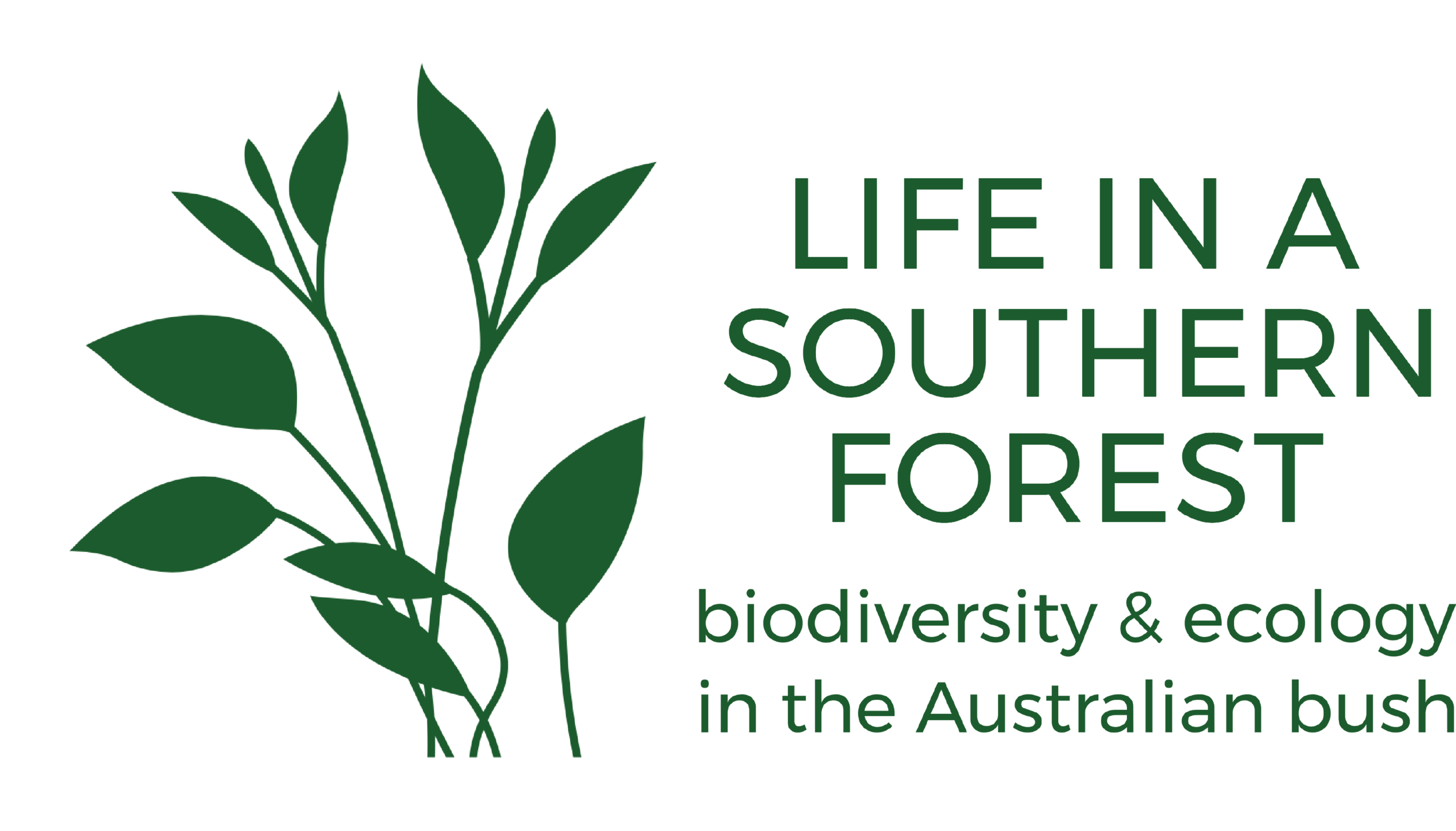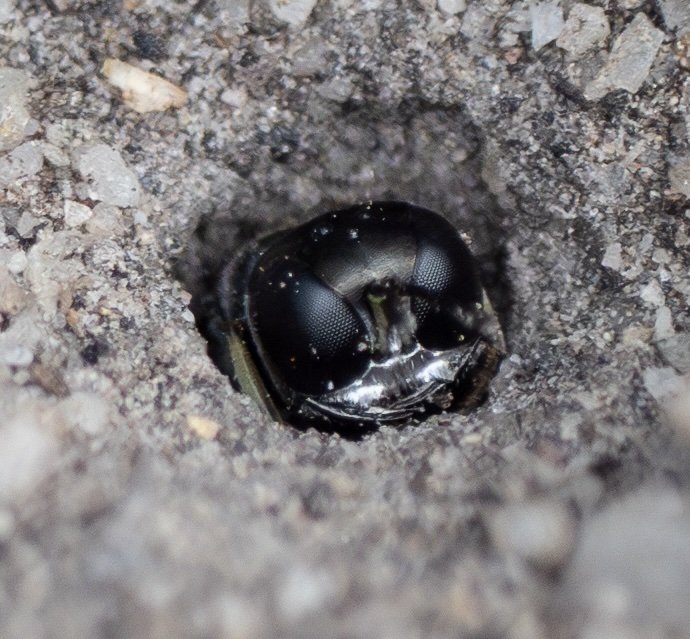
Rhopalum coriolum
Making their first appearance in late winter, these little wasps are one of the first crabronids of the season. They favour a firm-packed, clear and sunny patch of fine gravel for their burrows. By mid spring the adults are nowhere to be seen.
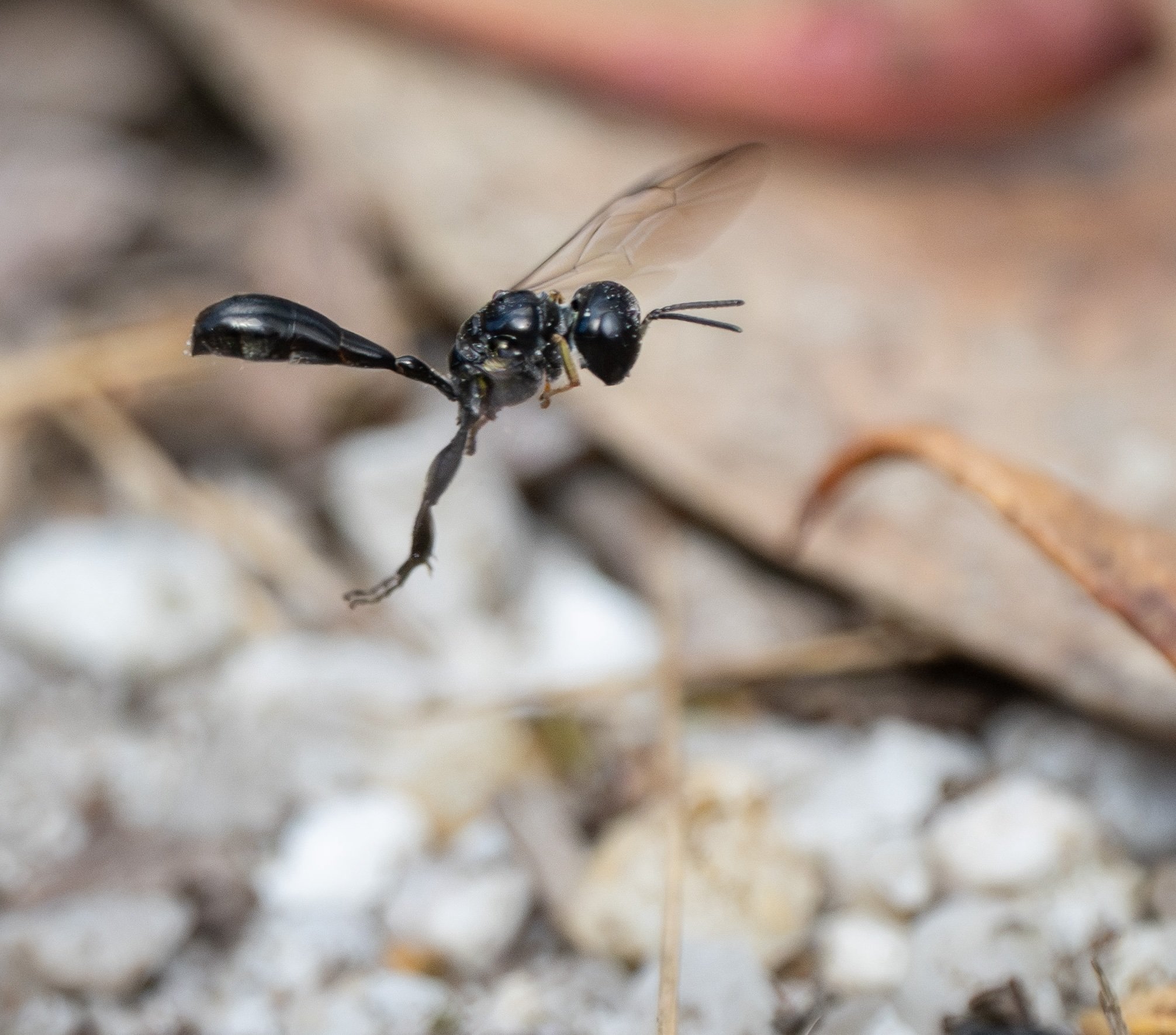
Rhopalum coriolum
Although less than 7mm from head to ‘tail’, their jizz catches my eye. Bobbing flight just above the ground, legs dangling, long abdomen trailing. And every year nesting in the same place.
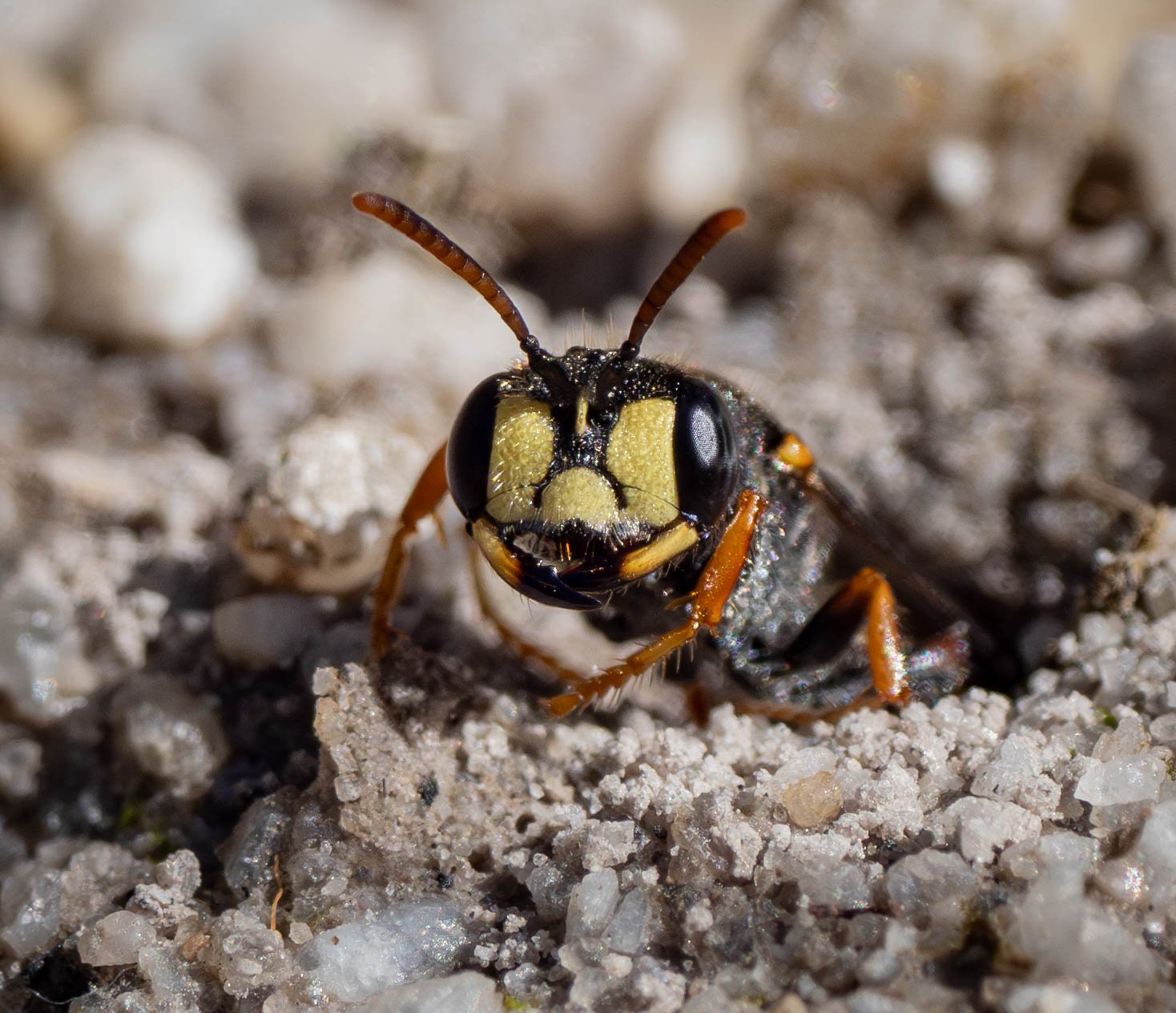
Cerceris antipodes
From October to April these bright yellow faces are my constant companions. The females overwinter as adults and set to renovating and stocking their nest burrows whenever weather allows.
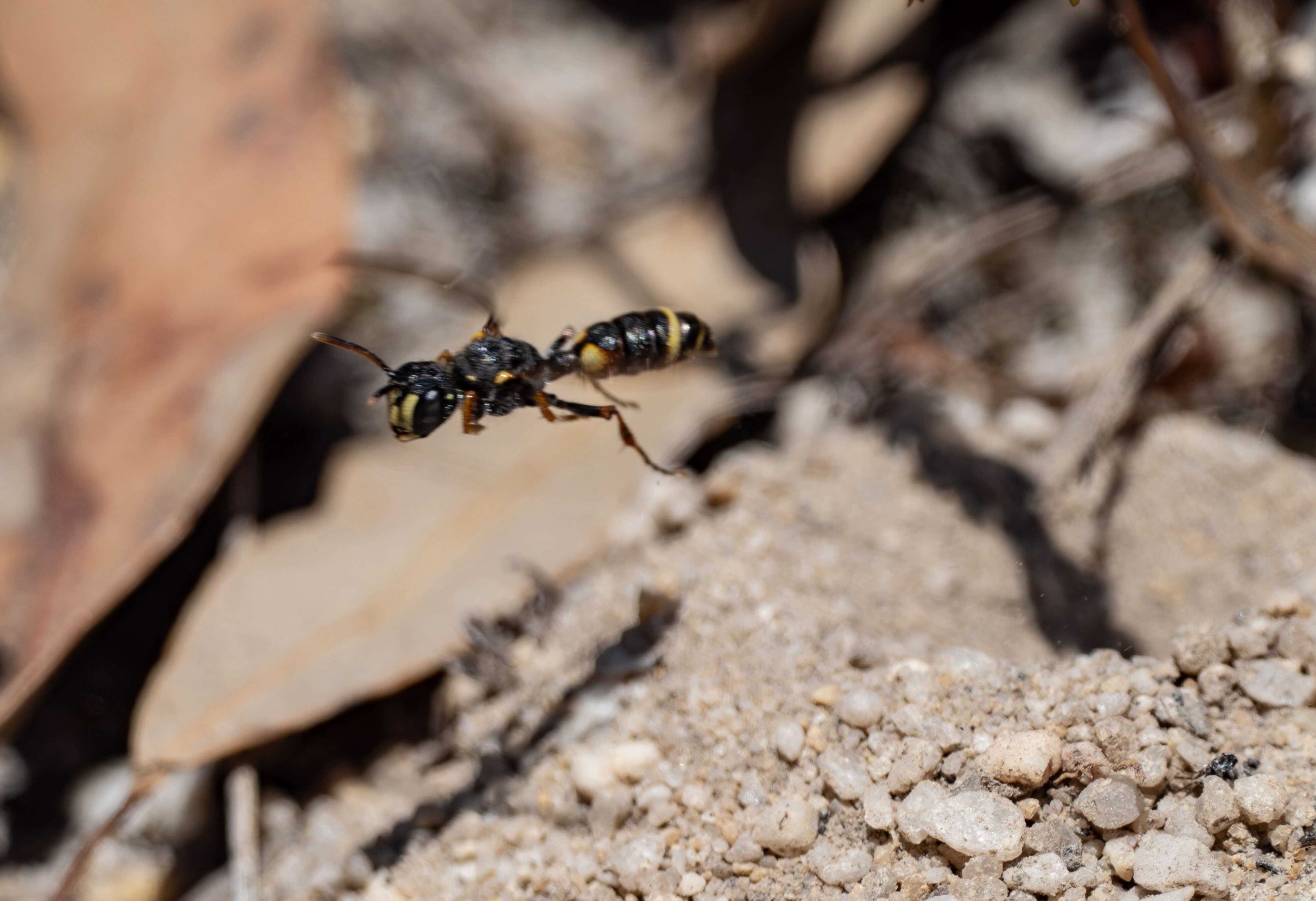
Cerceris antipodes
At 8mm, male Cerceris are slightly smaller than the females but from mid summer they are more commonly seen, patrolling the nest mounds looking for an opportunity to mate.

Cerceris antipodes
Until last month, I didn’t know where the males spent the night. Now I do … tucked away in the cracks or borer holes of old wood. In good weather, this little male gets out and about. But by day’s end he is always tucked in, with just his face visible to me as I pass by. He’s not alone. There’s a second male next door, in an adjacent crevice.
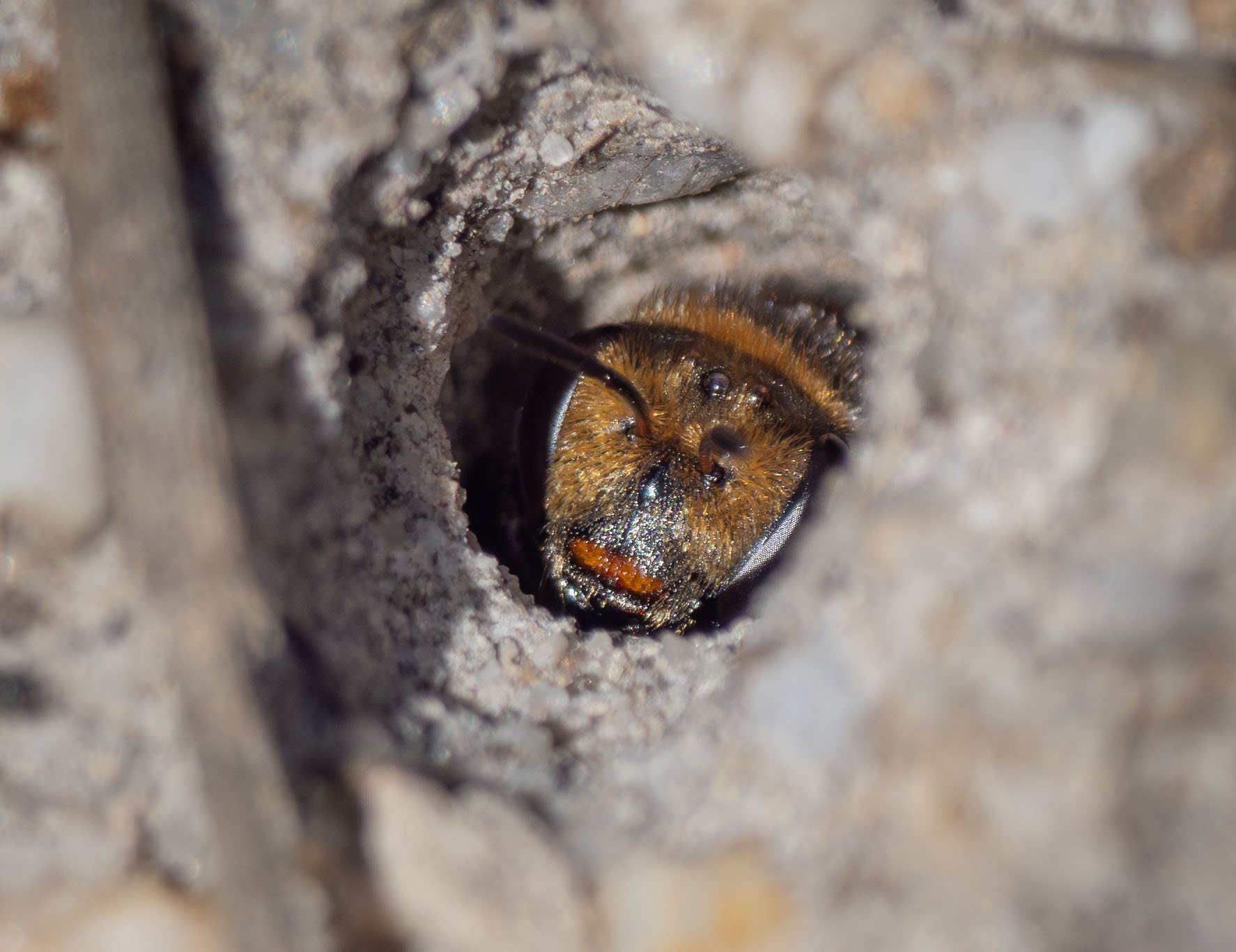
Lipotriches australica
Right alongside the Cerceris mounds are the perfectly round doors to bee burrows. And just like the Cerceris, this species nests in this same patch year after year.
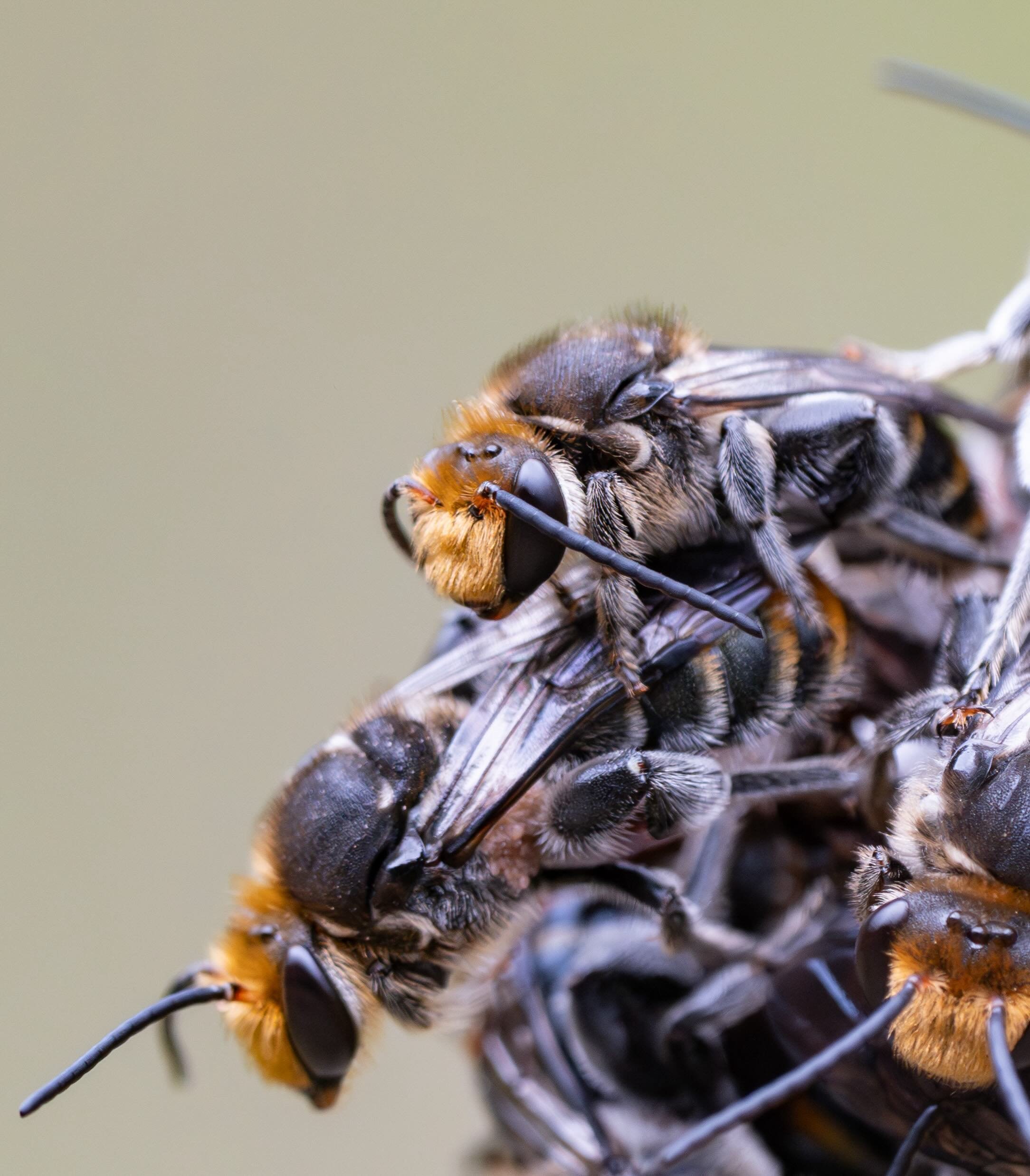
Lipotriches australica
While female Green-and-Gold Nomia Bees spend their nights below ground, males cling to one another on low vegetation. There must be some protection in numbers, for the bees seem rather vulnerable out in the open. They’re sluggish in the cool of evening and males cannot sting. Indeed, I think a dawn patrol of fairywrens made short work of the cluster the morning after this shot was taken.
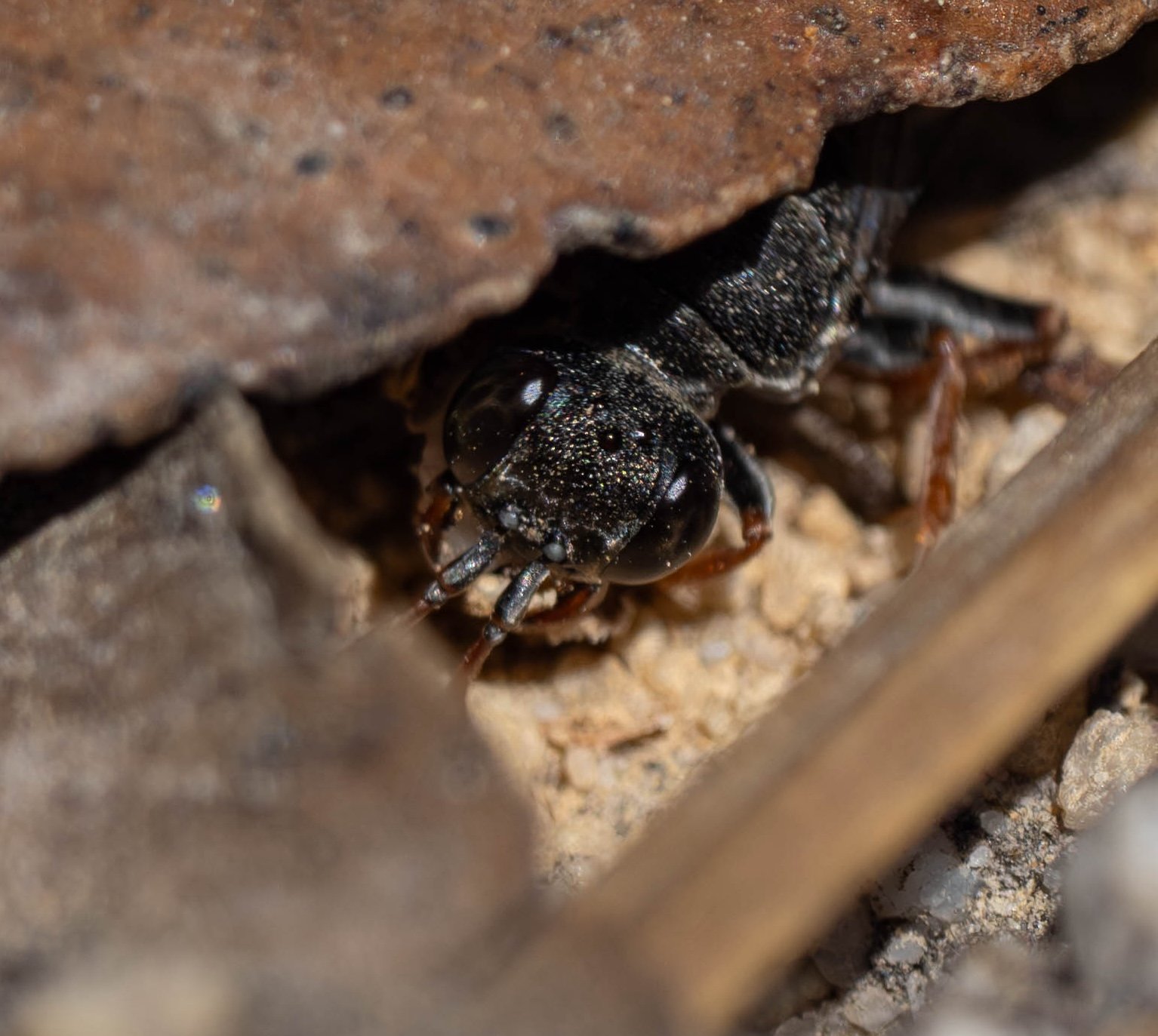
Sphodrotes punctuosa
Another dependable among the summer crowd, although females tend to be reclusive. They dig their nest burrows under leaves and rarely show their faces in the open. The males, however, are quite a different story!
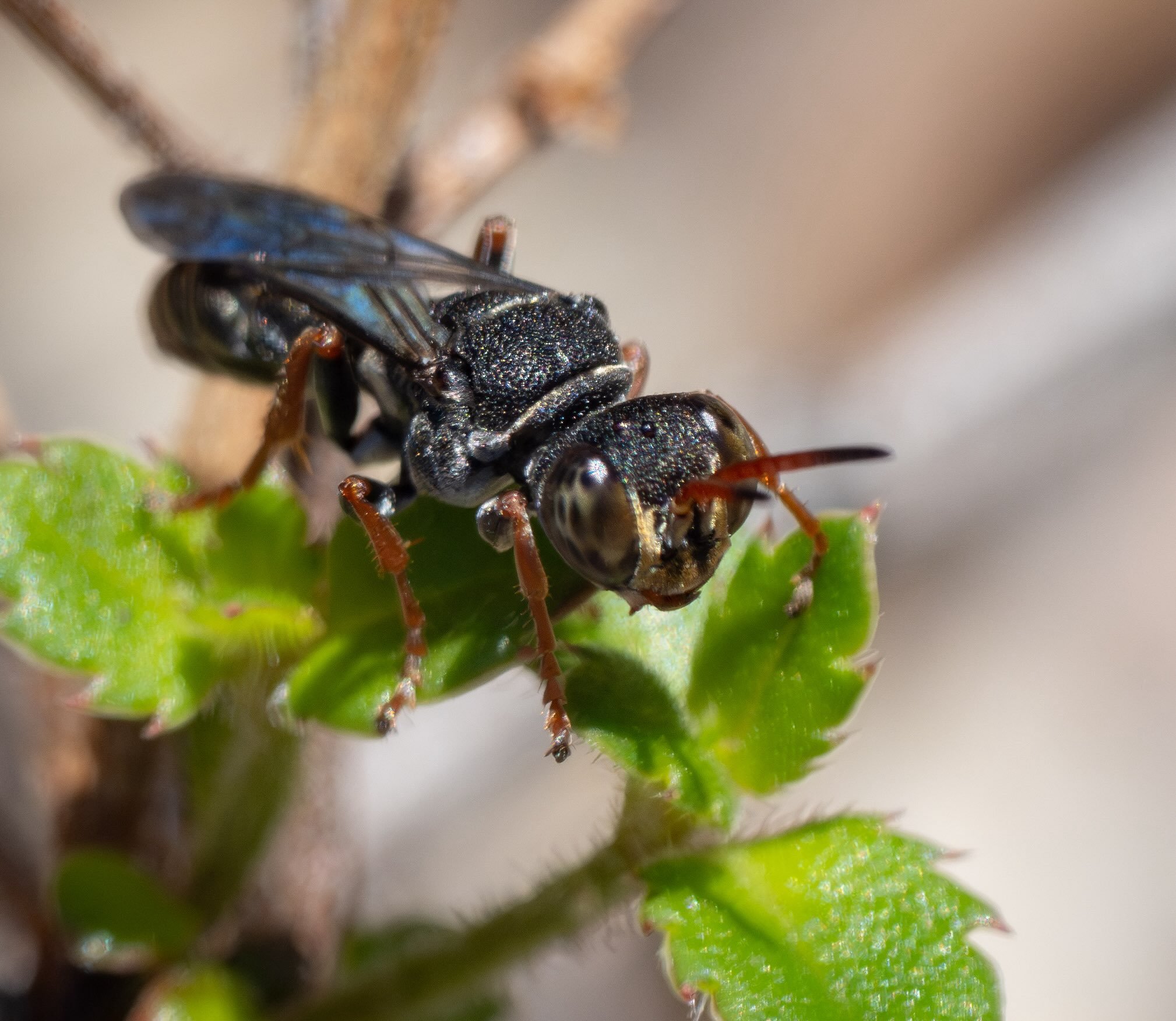
Sphodrotes punctuosa
When not patrolling the sandy, leaf-littered tracks favoured by the nesting females, males strike a pose on low vegetation. They turn on the spot, no doubt on the lookout for rivals and threats …
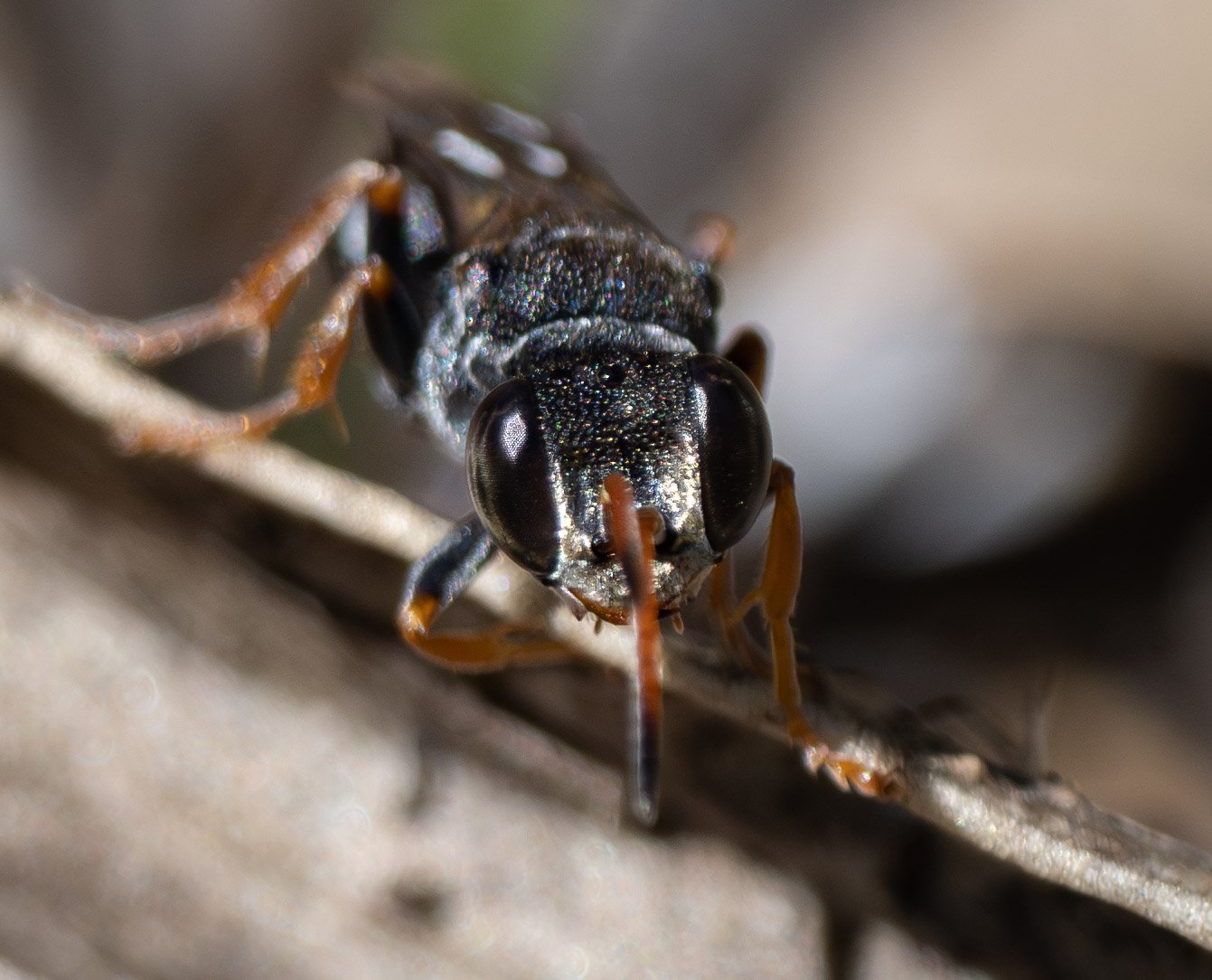
Sphodrotes punctuosa
… and typically favour me with a long, hard stare. Rather plucky for an insect no more than 10mm long!
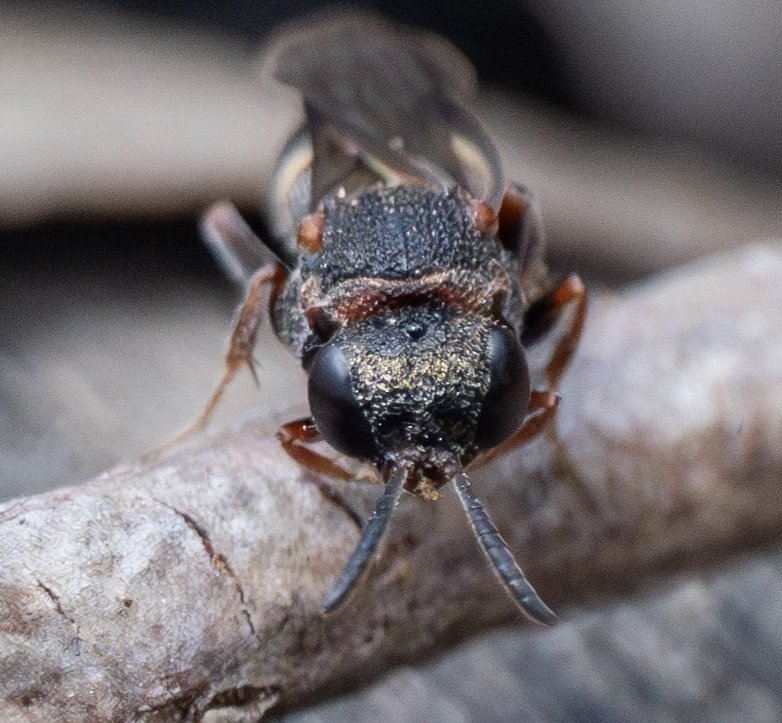
Acanthostethus
On a shady forest path here at home
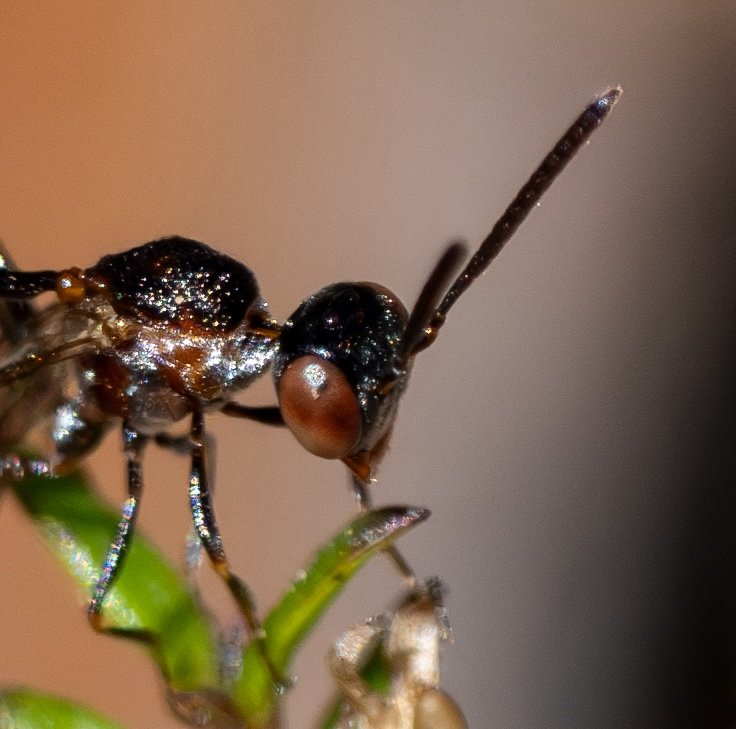
Pseudofoenus
On a shady forest path here at home
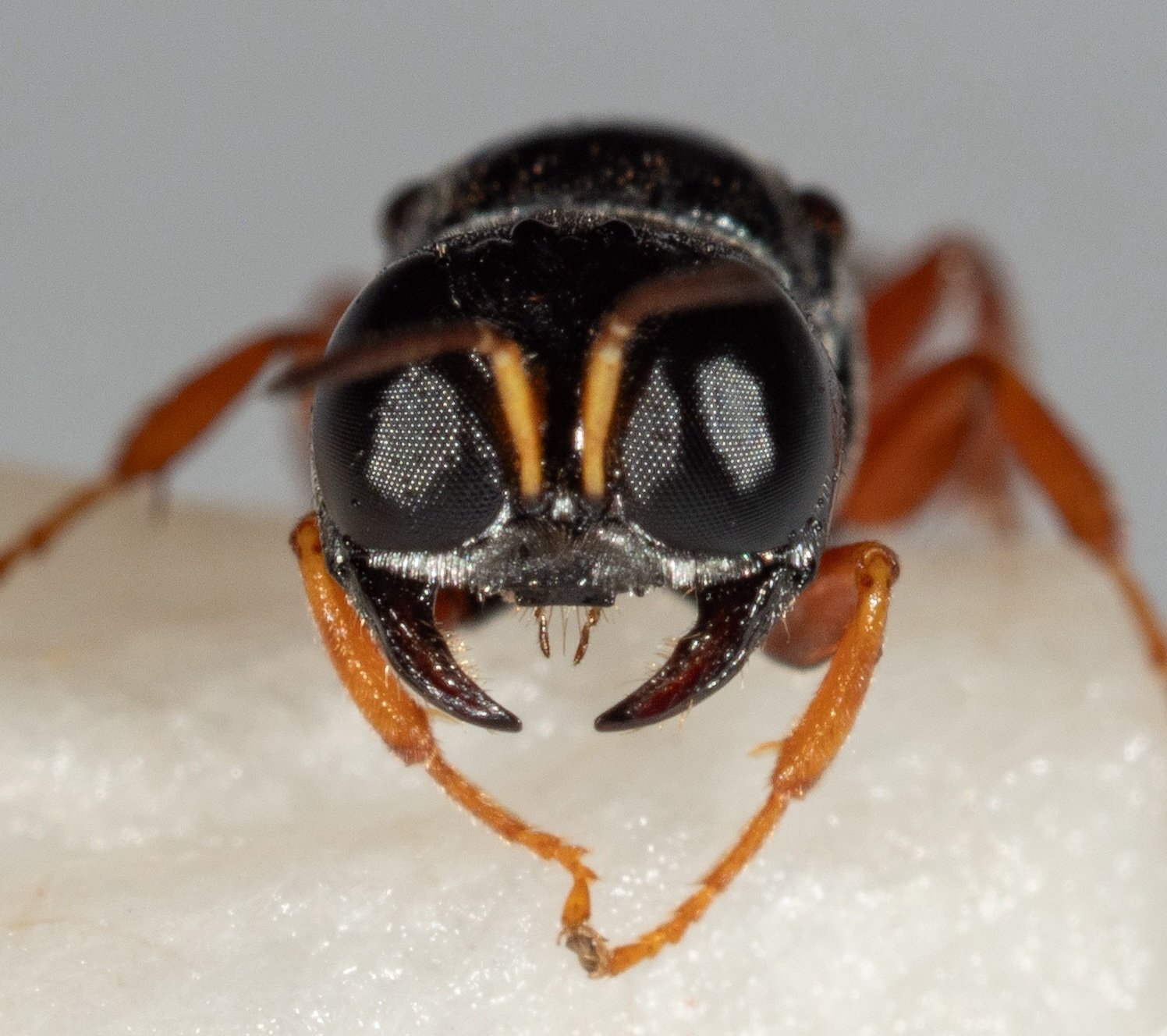
Pseudoturneria
In a roadside ditch, about 2km from the forest.
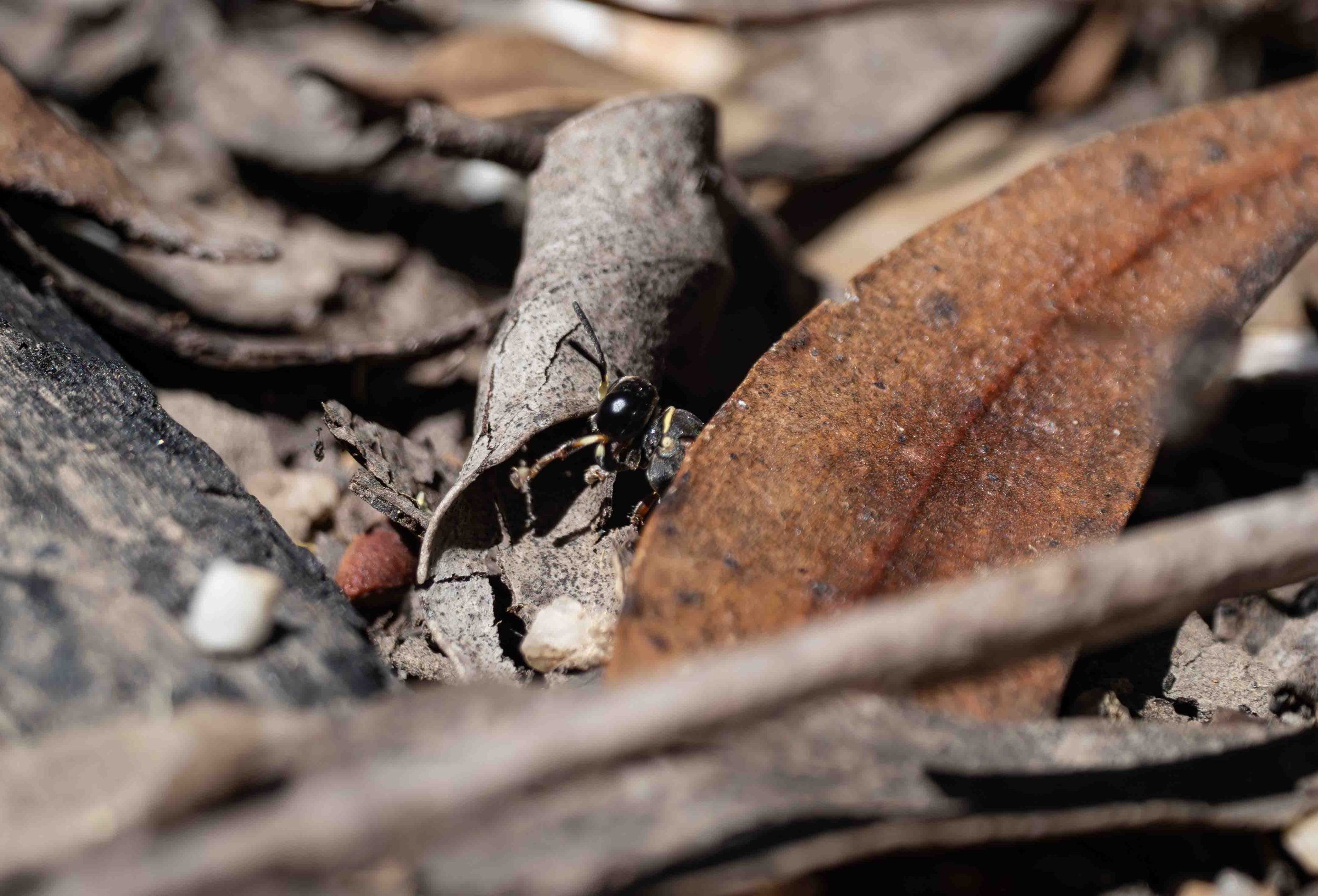
Austrogorytes spryi
A shady forest path, with an ever-changing layer of leaves and small twigs … and a familiar face emerges!

Megalyra lilliputiana
From northern NSW, alongside tropical rainforest
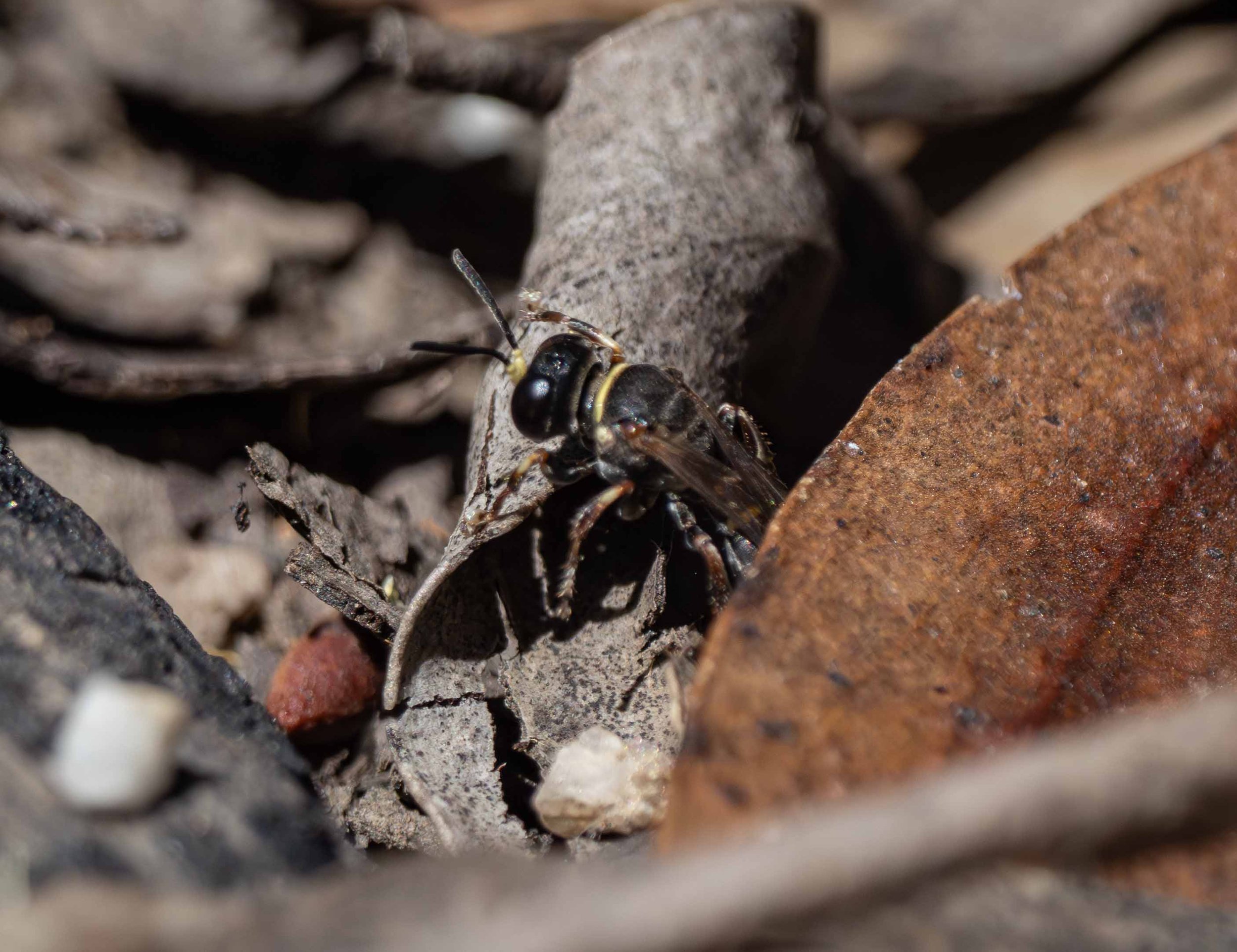
Austrogorytes spryi
My first brief glimpse, but enough to confirm that these medium-sized sand wasps are actively nesting here again this season.
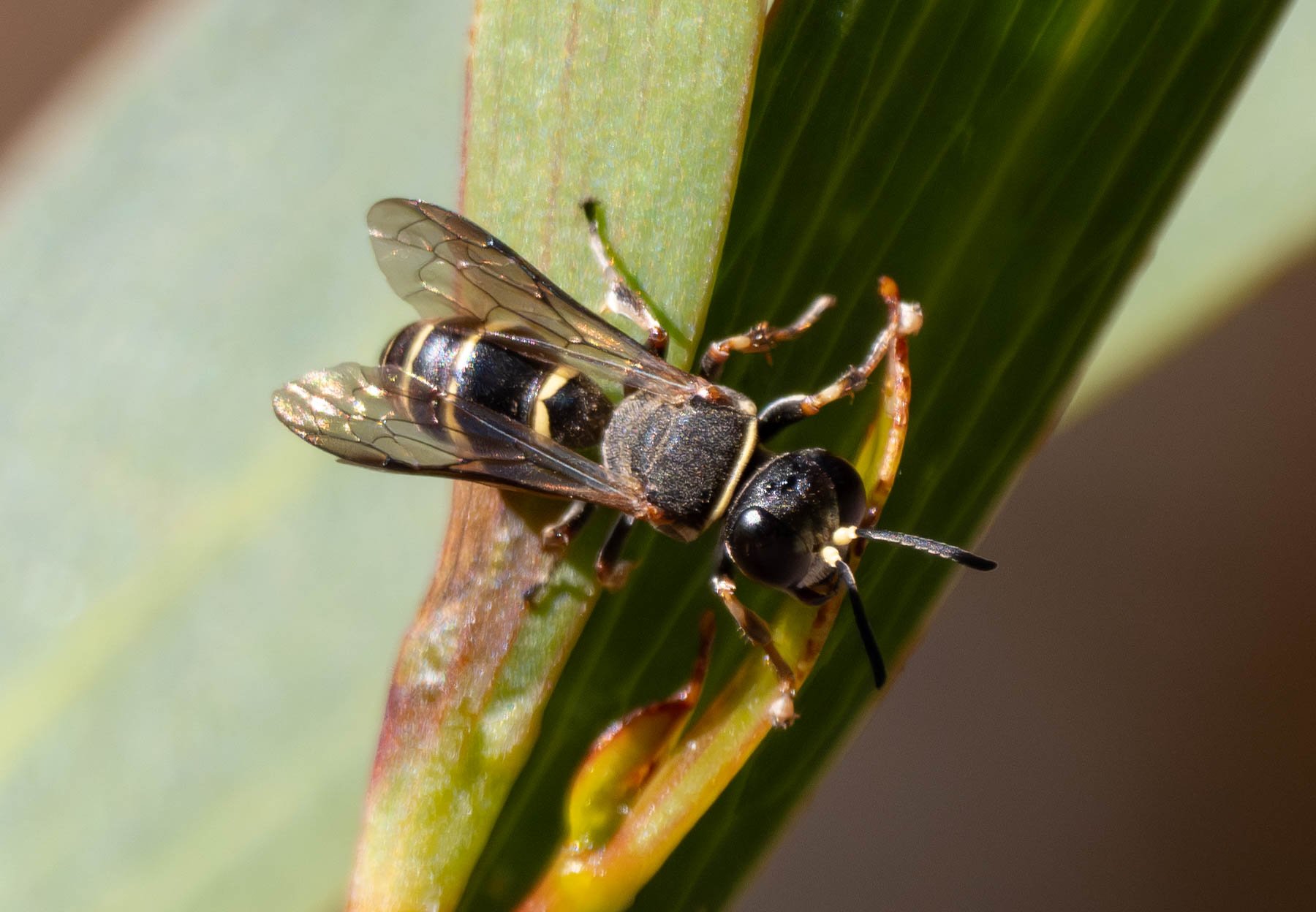
Austrogorytes spryi
My best chance of getting a good look at the nesting females is quite early in the morning. They occasionally perch on low plants alongside the track, preening, perhaps warming up in a patch of sun … and wary of threats in the vicinity of their nearby nests.
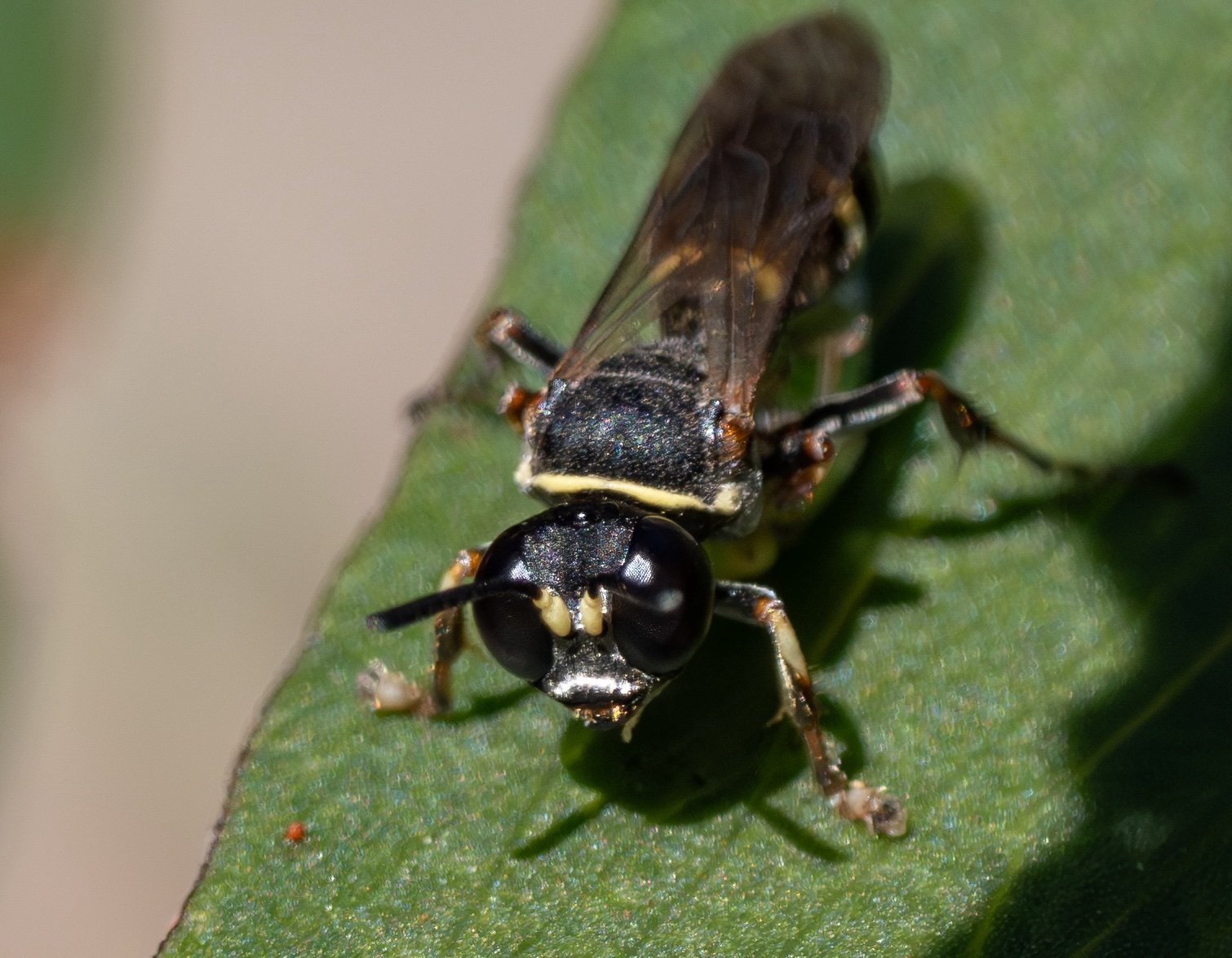
Austrogorytes spryi
There are at least two females with nests in close proximity. Returning from a successful hunt, this one perched briefly before diving below ground. Austrogorytes typically prey upon leafhoppers (e.g. Eurymelinae), both nymphs and adults. This appears to be a nymph she is holding below her body, gripped by her middle legs.
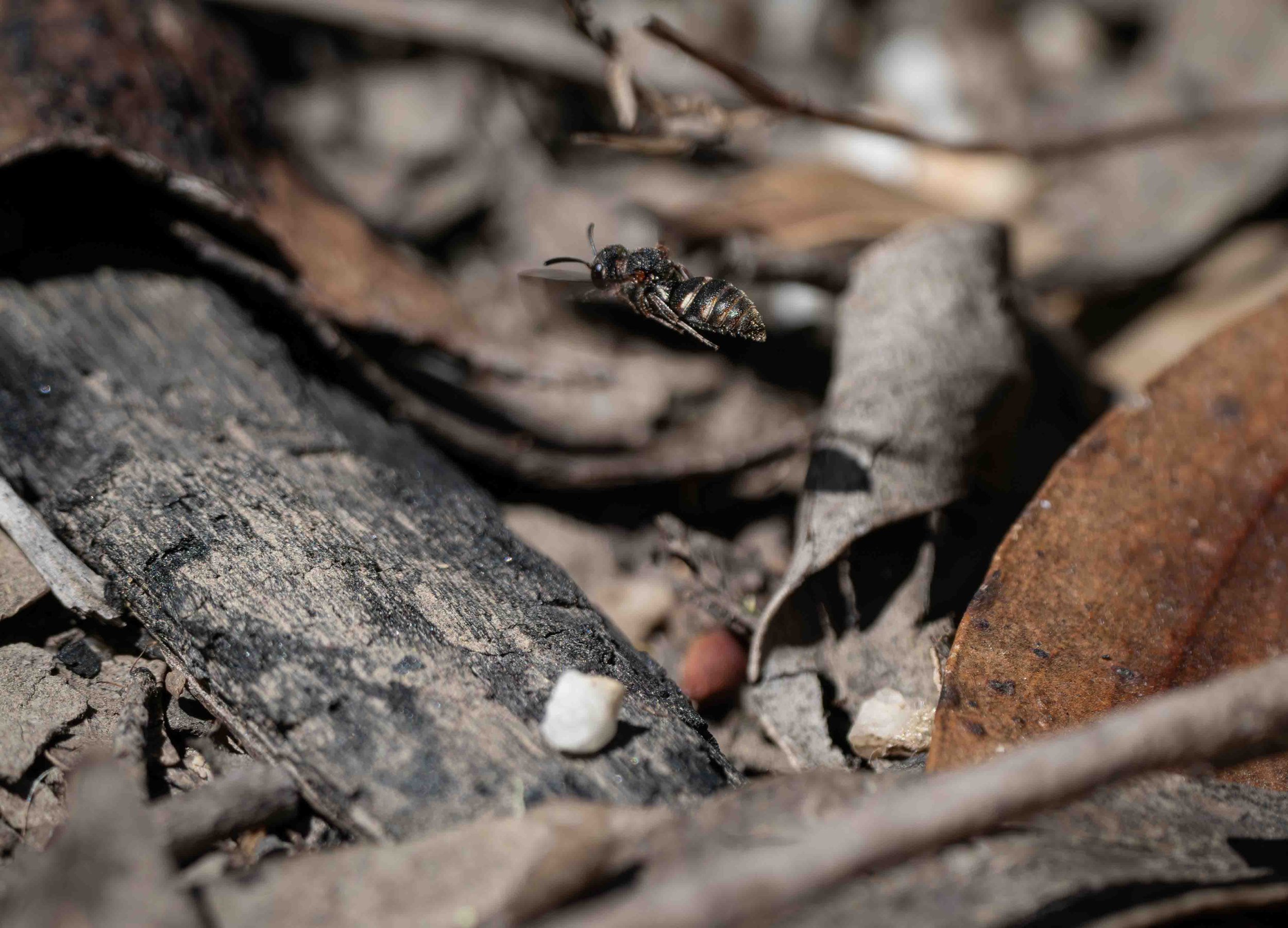
As I watched the nest, waiting for Austrogorytes to return, this small wasp flew over … clearly also monitoring this site! Something quite new! The appearance of a crabronid, but the behaviour of a parasite.
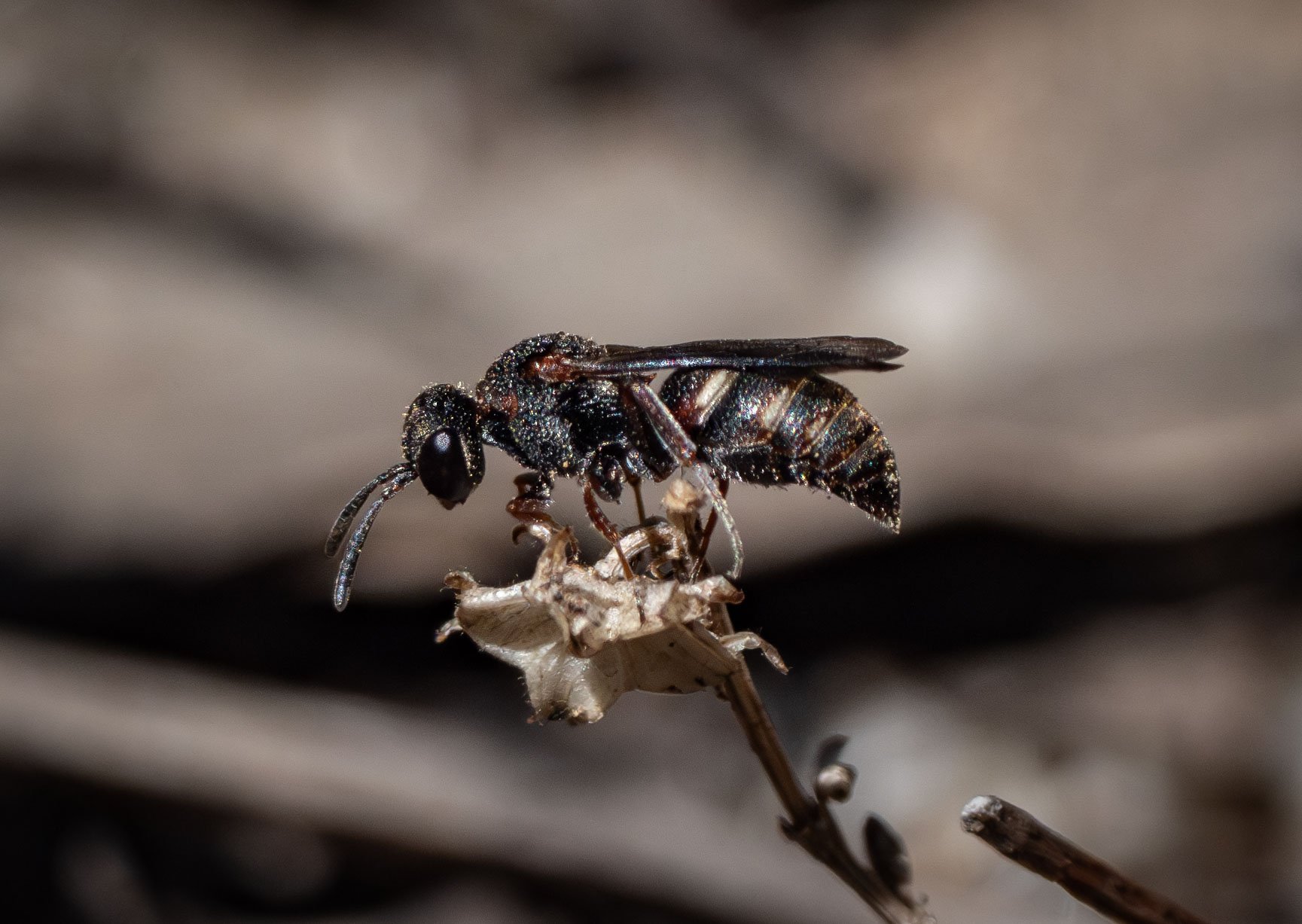
When not hovering about the nest site, the little wasp perched close by.
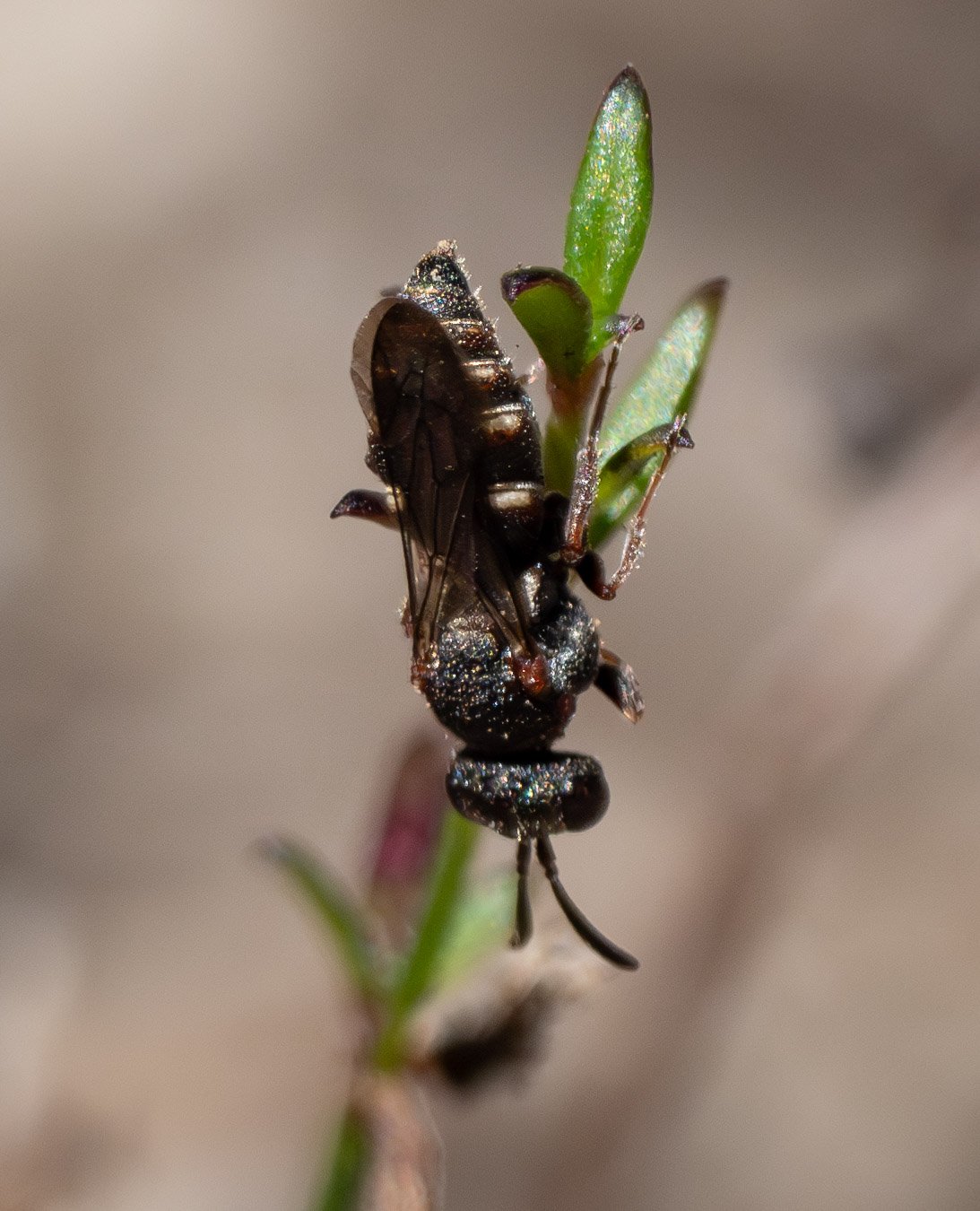
Patient and attentive, she certainly seemed to be watching the nest entrance.
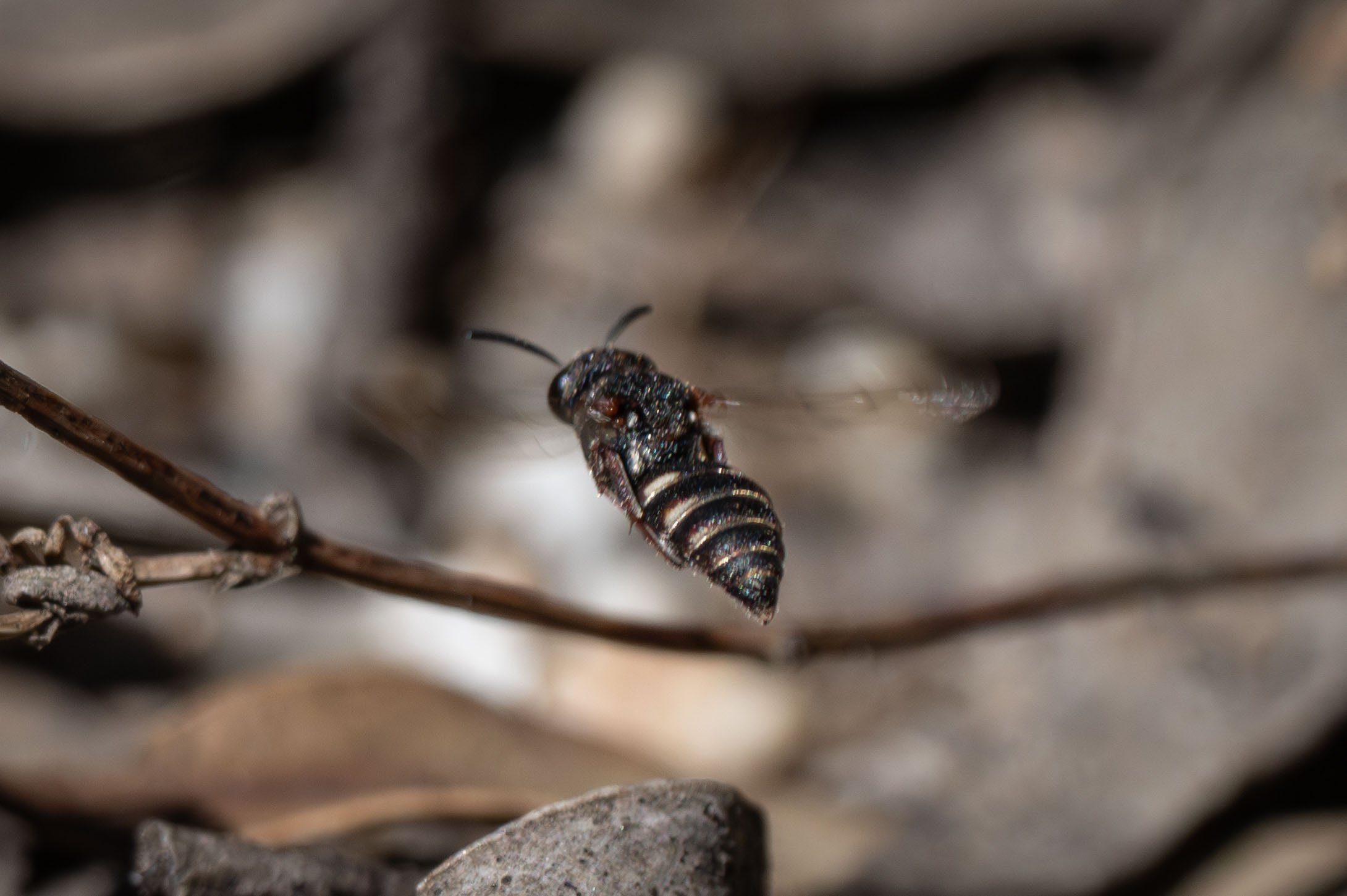
Moments after this hovering sortie, she disappeared under the leaves … apparently into the Austrogorytes’ burrow (although the opening of the nest was hidden from view).
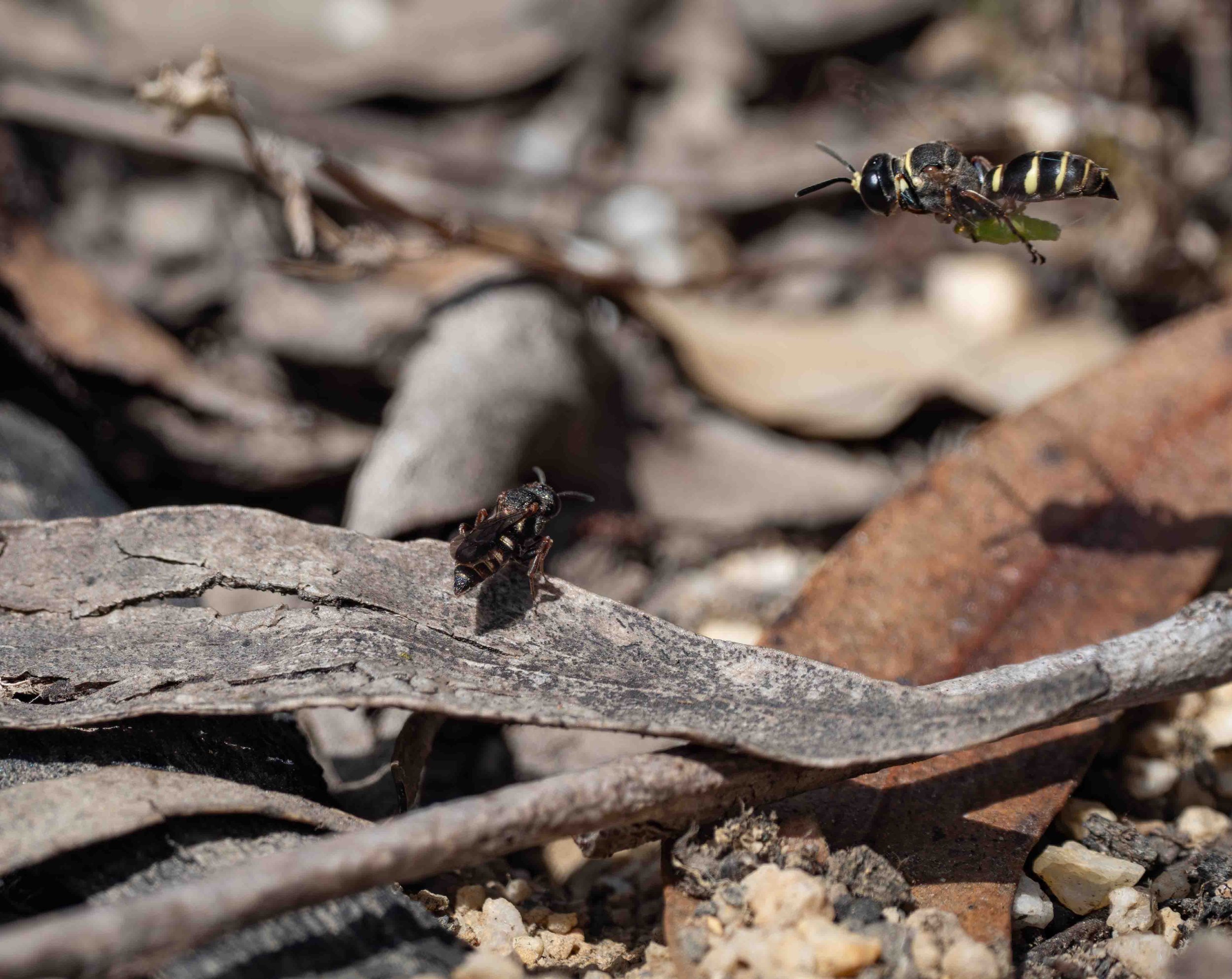
Acanthostethus (and Austrogorytes spryi!)
On this day I was barely settled, my camera trained on the little parasite as she was again watching the nest opening … and the nest owner flew in! Sometimes you just get lucky!! :)

Austrogorytes spryi
Carrying her paralysed prey in the usual way, the nesting female slows her flight before quickly disappearing into the nest.
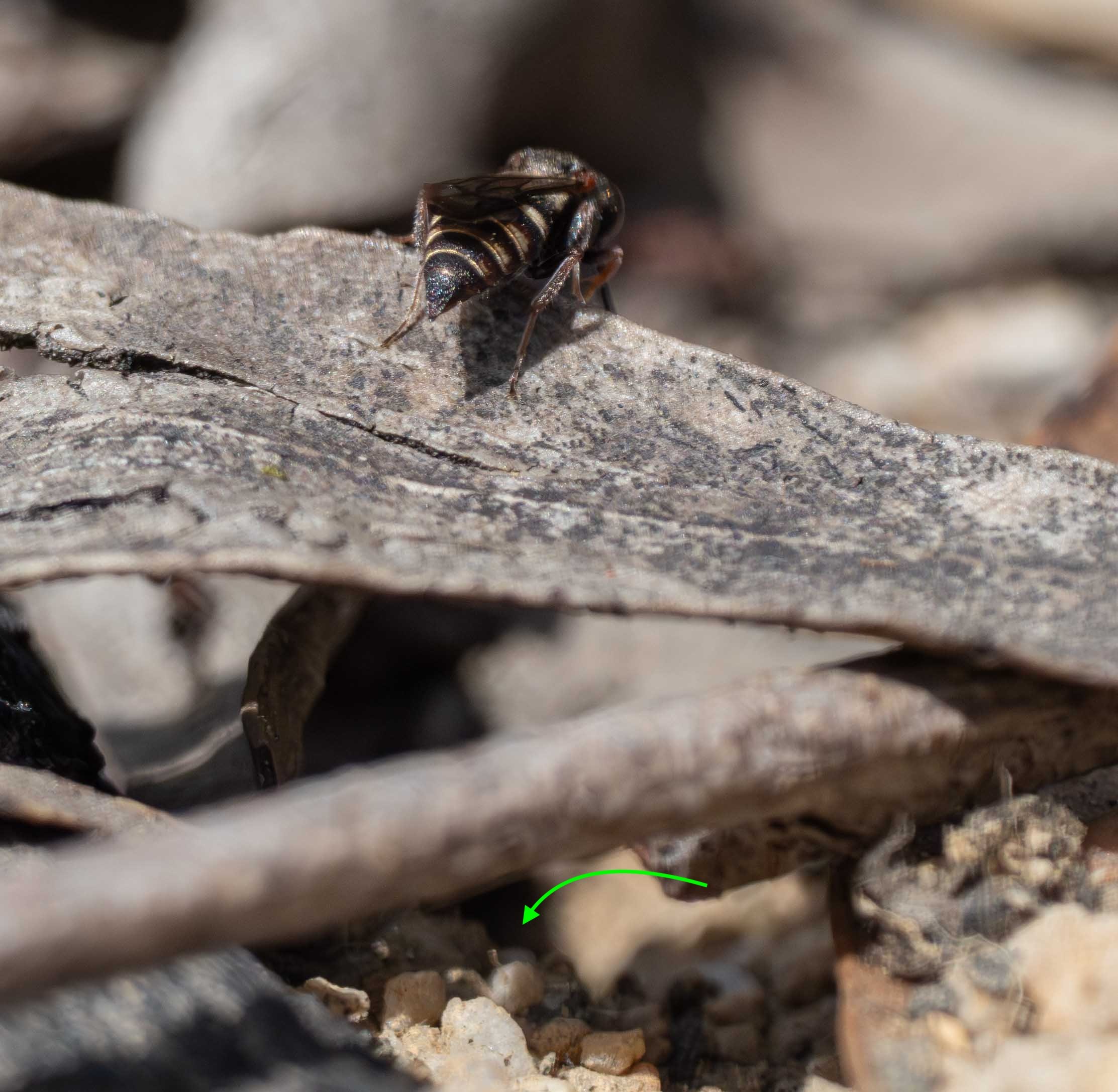
Acanthostethus
Previously motionless, the stealthy parasite becomes twitchy. She seems ‘excited’. First peering down into the nest opening (arrow) …
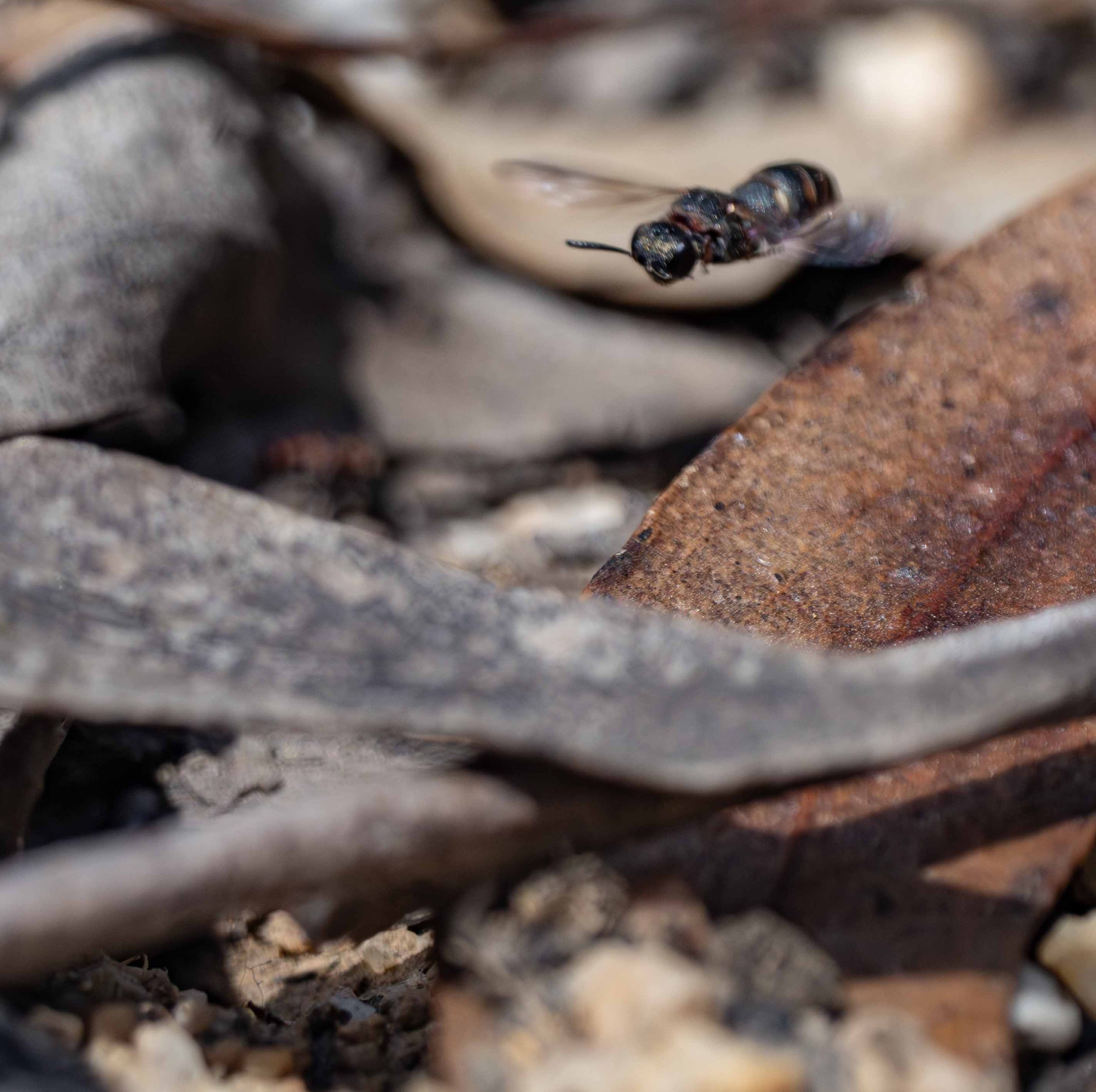
Acanthostethus
… then hovering, before descending & disappearing from view. Briefly. I think the owner is still down below. I didn’t see Austrogorytes depart, and I was watching intently.
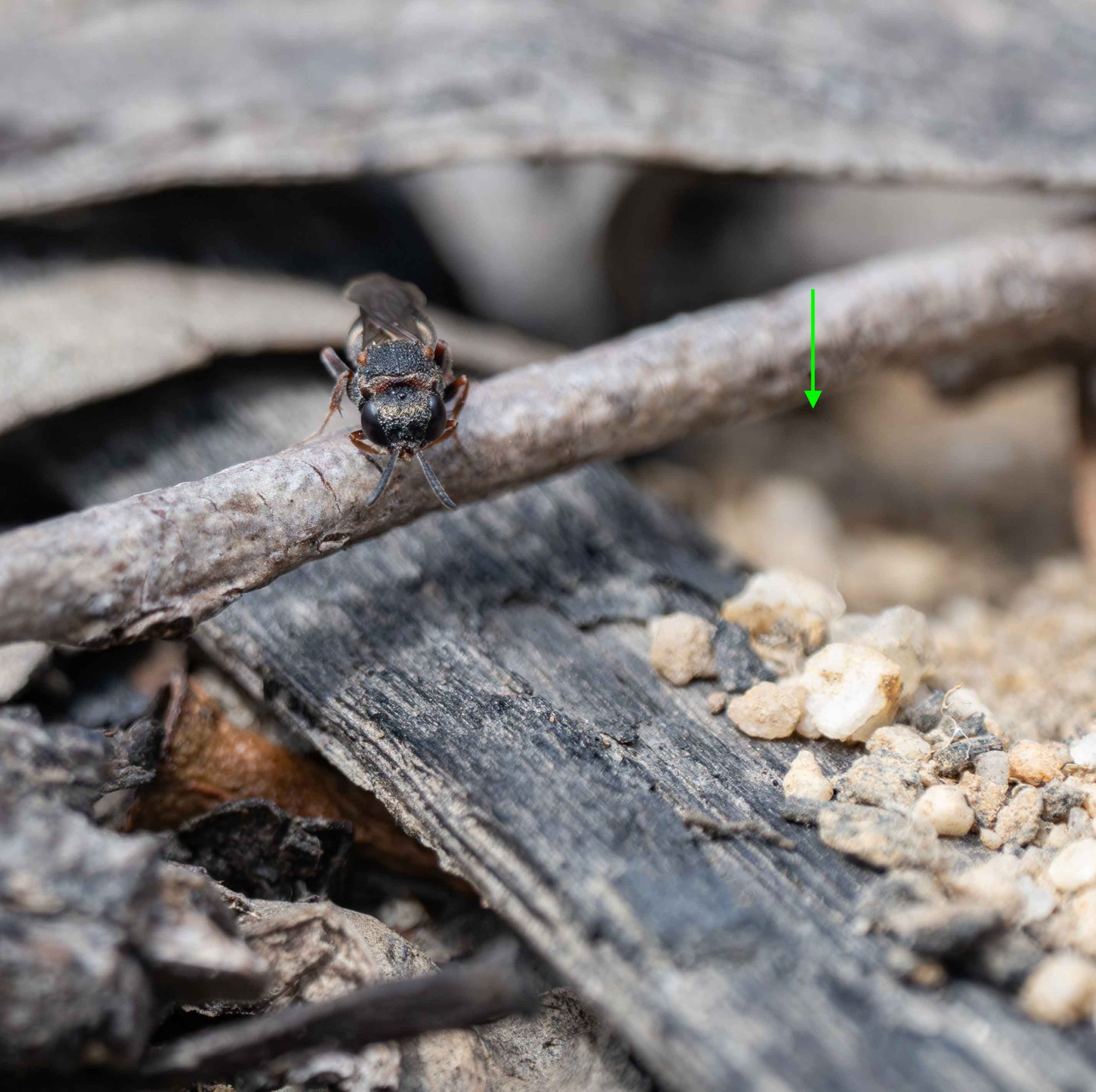
Acanthostethus
It was a quick visit. Within 2 minutes she’s out again, perched and grooming. But still close enough for a quick dash back inside should she so choose.
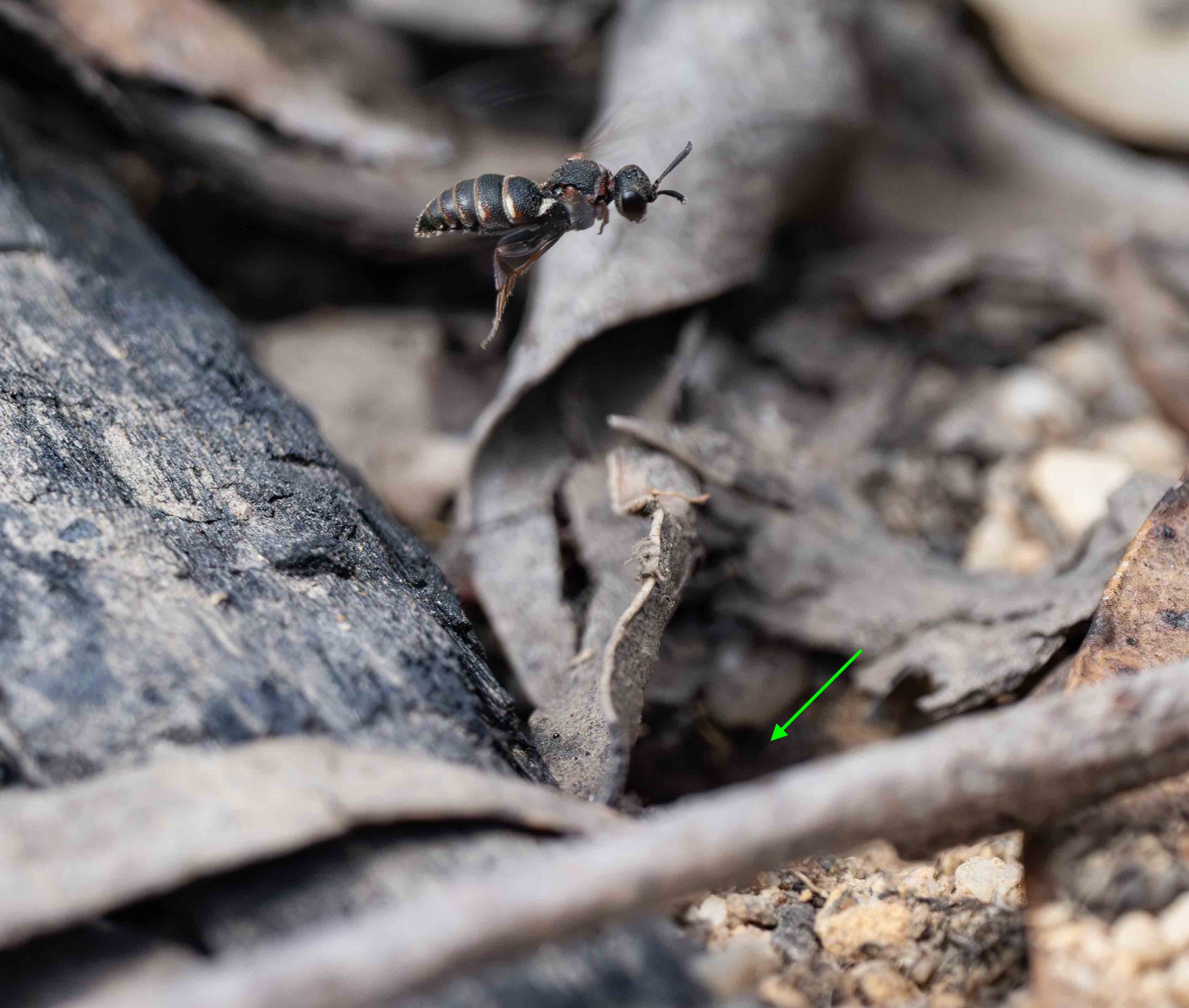
Acanthostethus
10:55 am
Patrolling the area around the nest, apparently with an eye (or two) on the opening (arrow).
Soon after this shot, there was further action.
Austrogorytes, the home owner, left the burrow and flew off (10:58:14). Acanthostethus entered the burrow and disappeared (10:58:57) … but, not for long. She was back out, on watch about 20 seconds later.
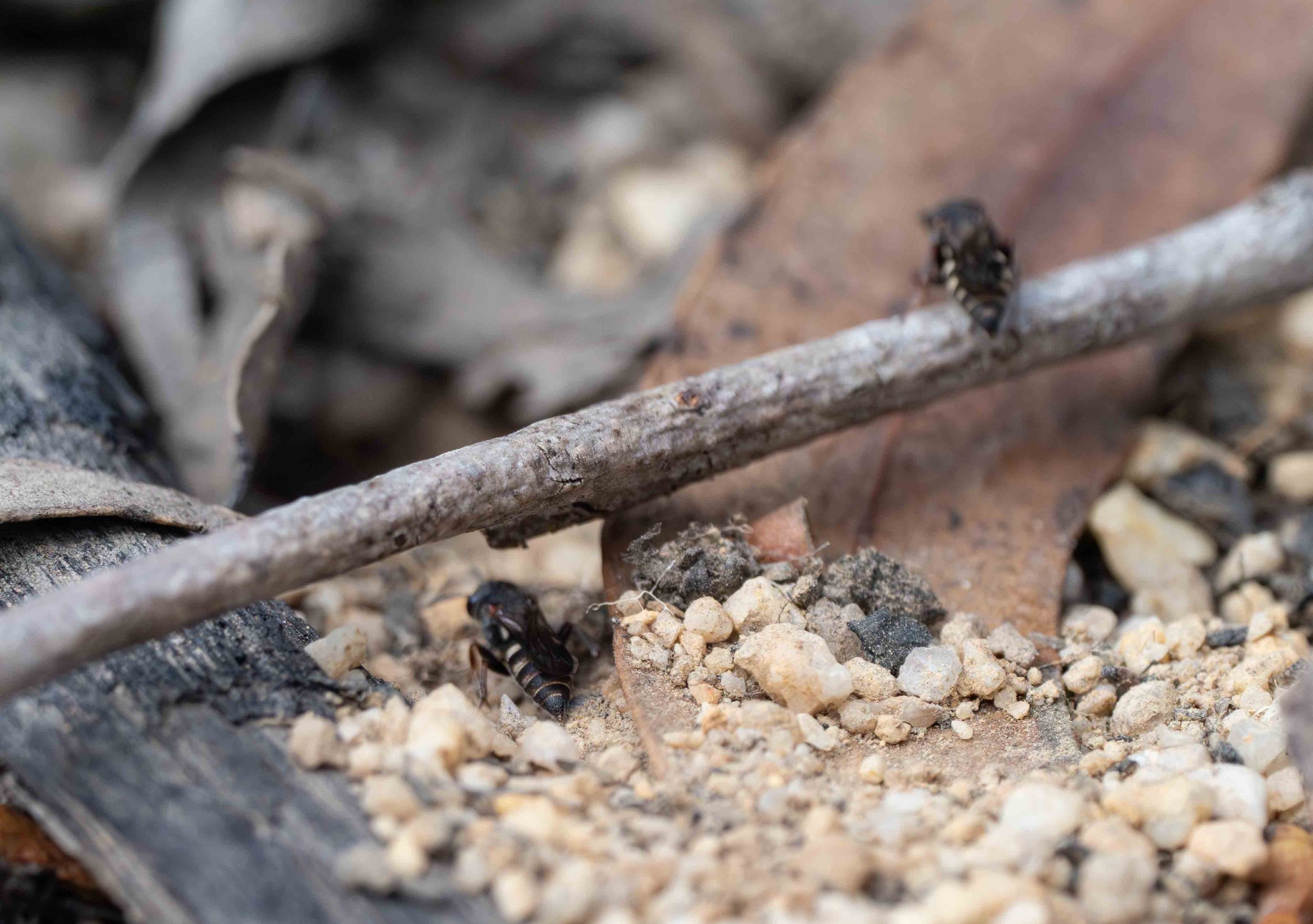
Acanthostethus
10:59:24
And suddenly she is joined by a second watcher! Two seconds after this shot the first wasp scurries into vacant nest.
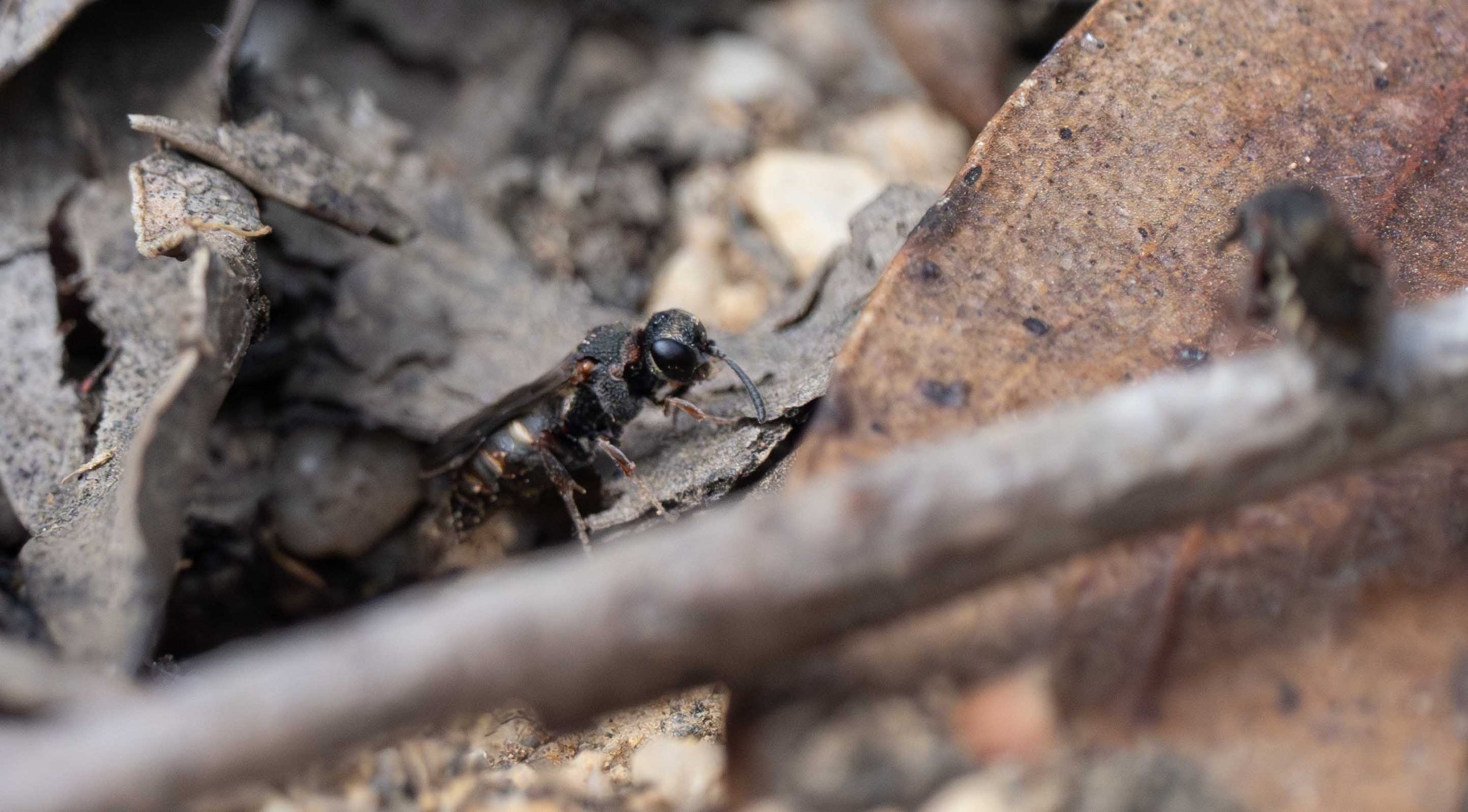
Acanthostethus
25 seconds on and the explorer returns (10:59:50), the second wasp motionless all the while.
At first I thought Wasp #2 might be a lurking male, but no. Both are females.
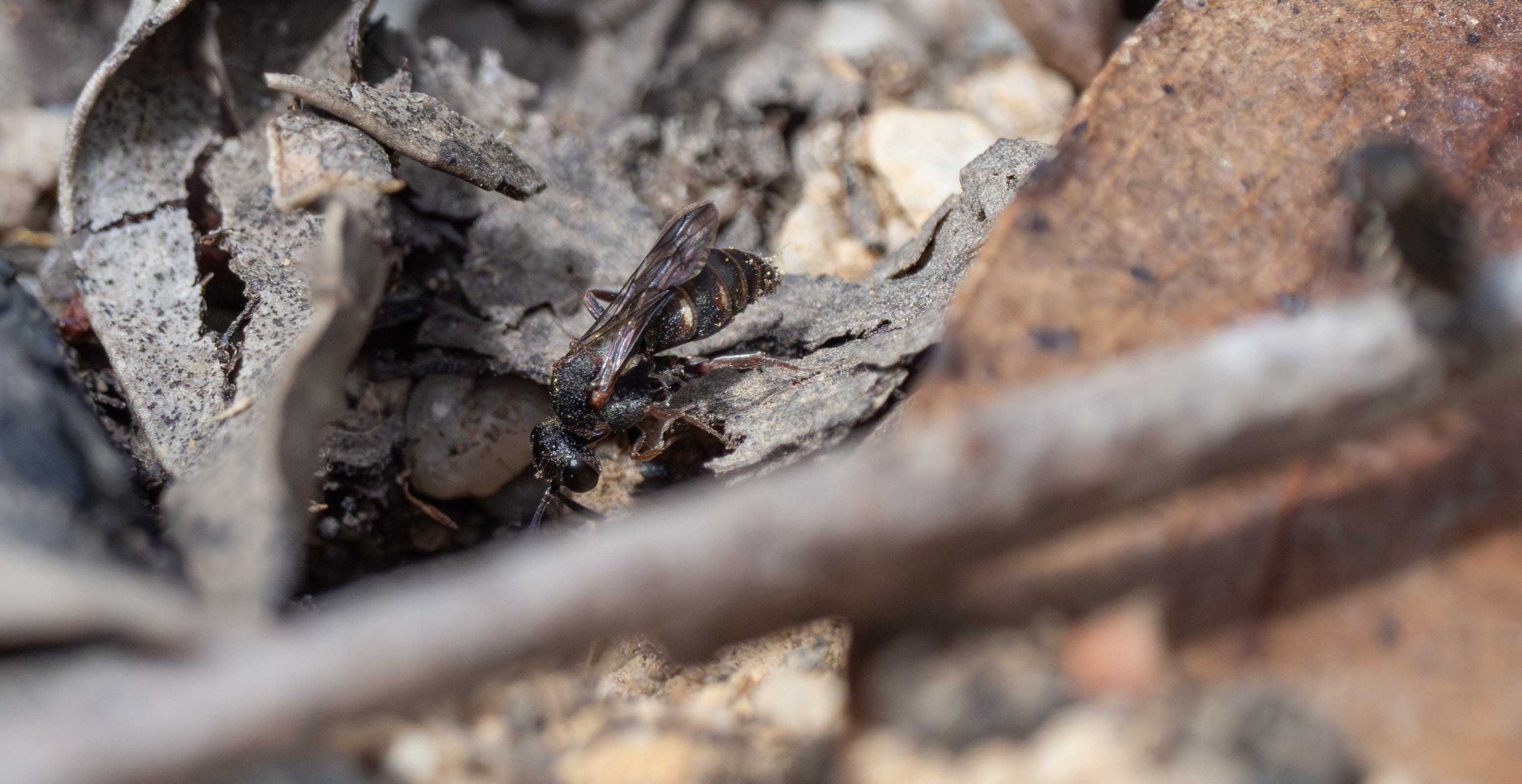
Acanthostethus
Wasp #1 fusses about the burrow entrance for a further 40 seconds, making just a single 2-second dash inside during that time, then departs.
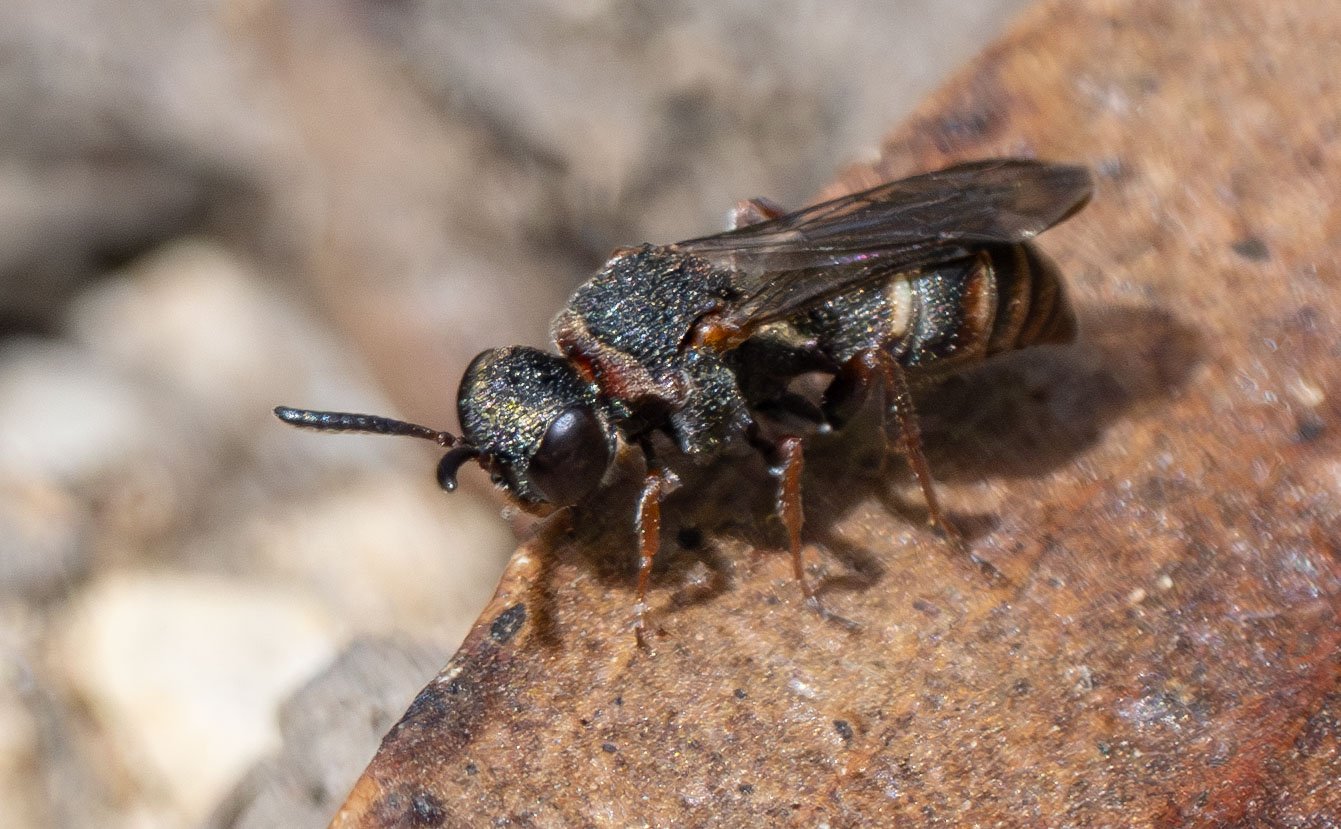
Acanthostethus
Only now that she’s alone does Wasp #2 move in for a closer look
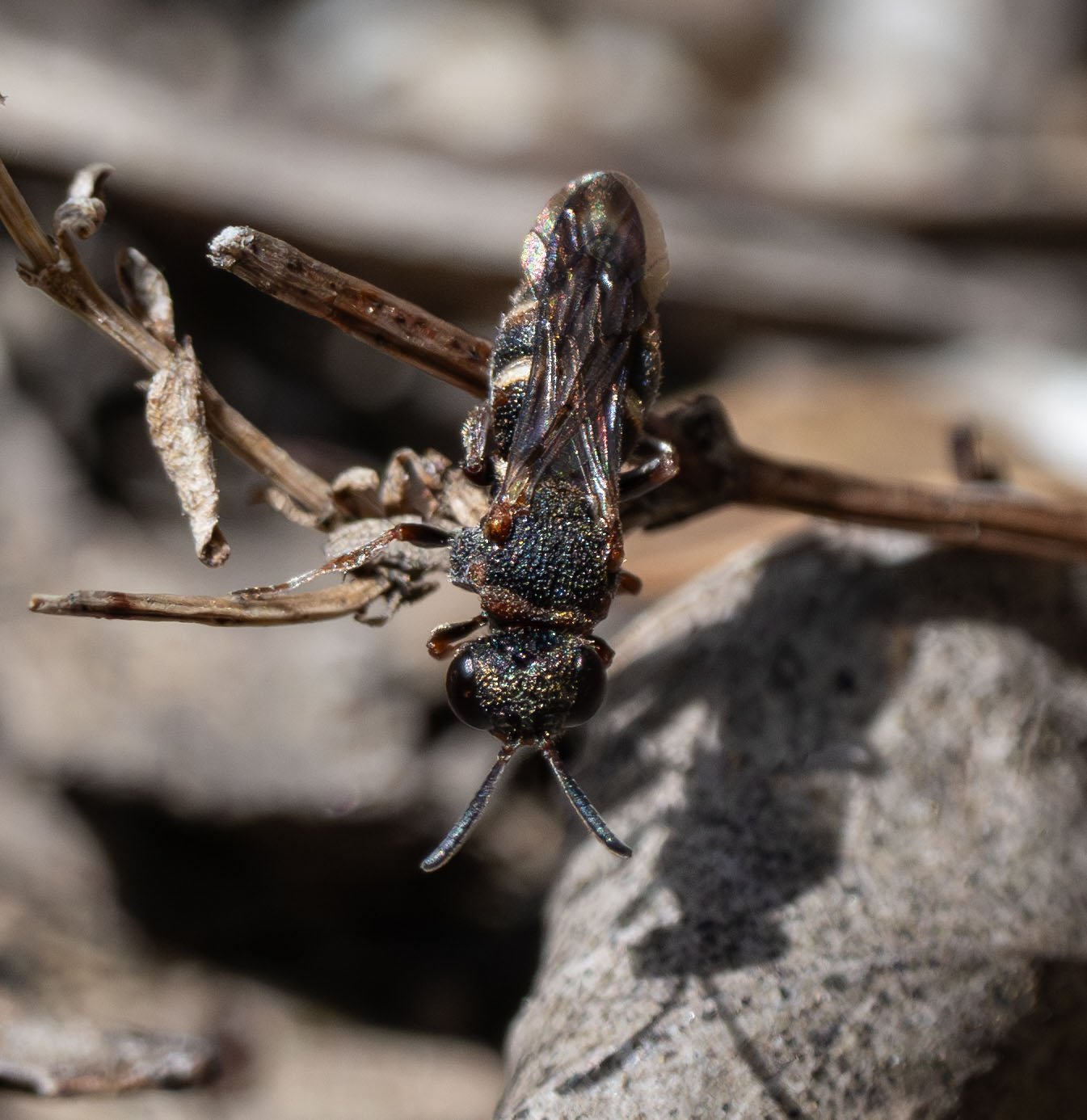
Acanthostethus
Wasp #2 continues to loiter in the area of the opening, but I didn’t see her enter. Perhaps she’s awaiting a fresh food delivery by the unfortunate host.
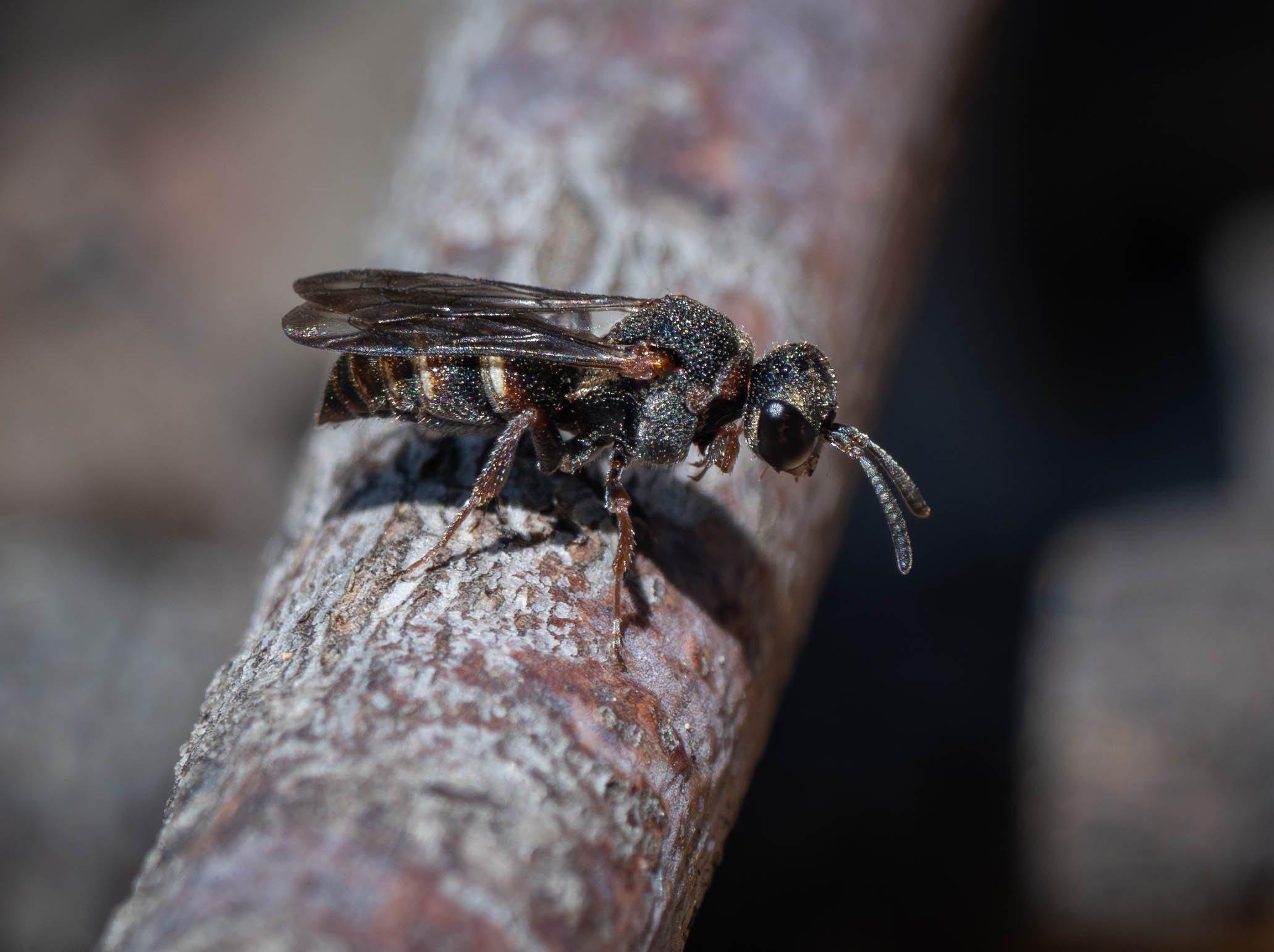
Several of the diagnostic features of Acanthostethus are clearly visible here:
- heavily sclerotised cuticle
- stout gaster
- posterolateral spines on the propodeum
- antennae narrower at the base than the apex
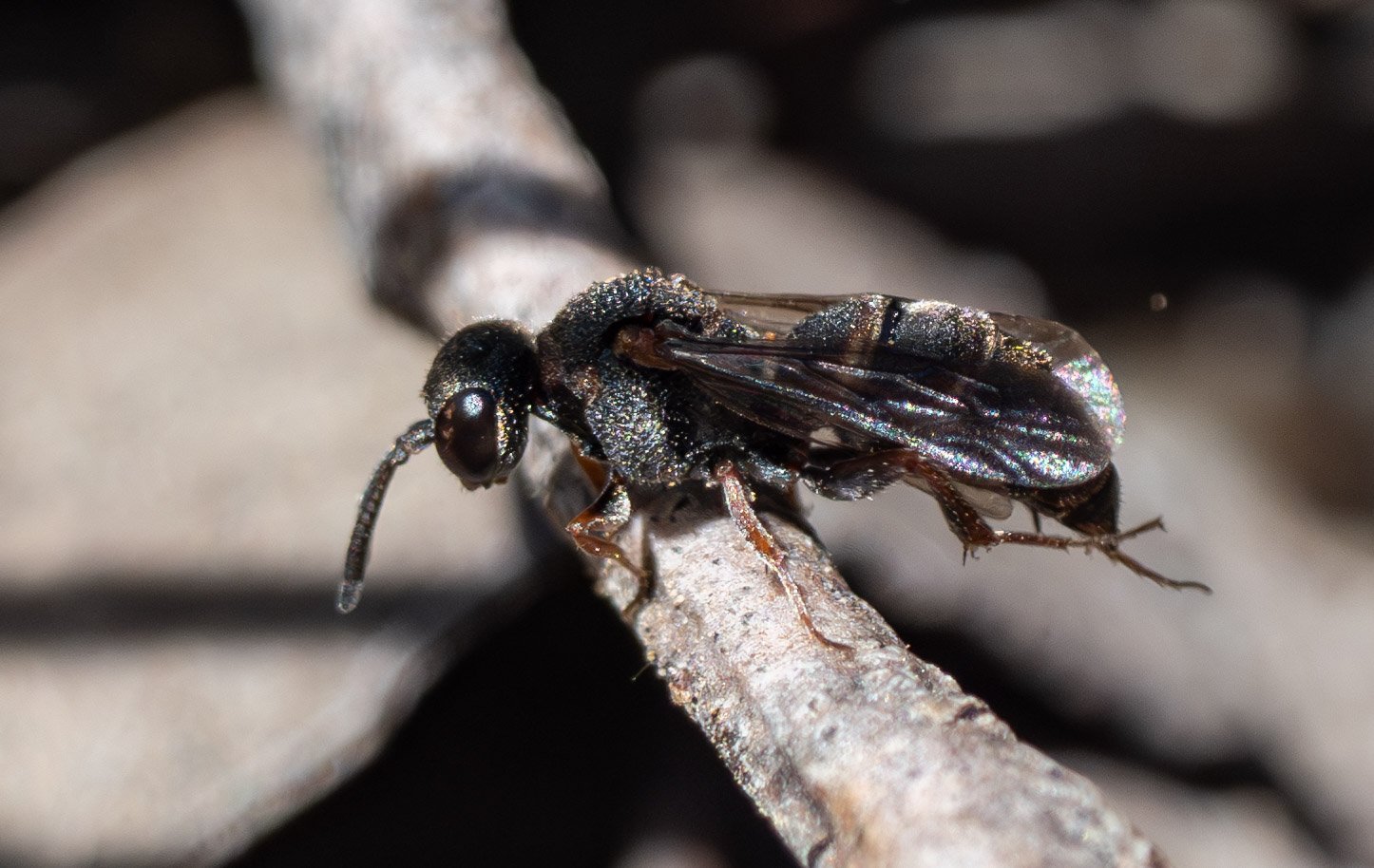
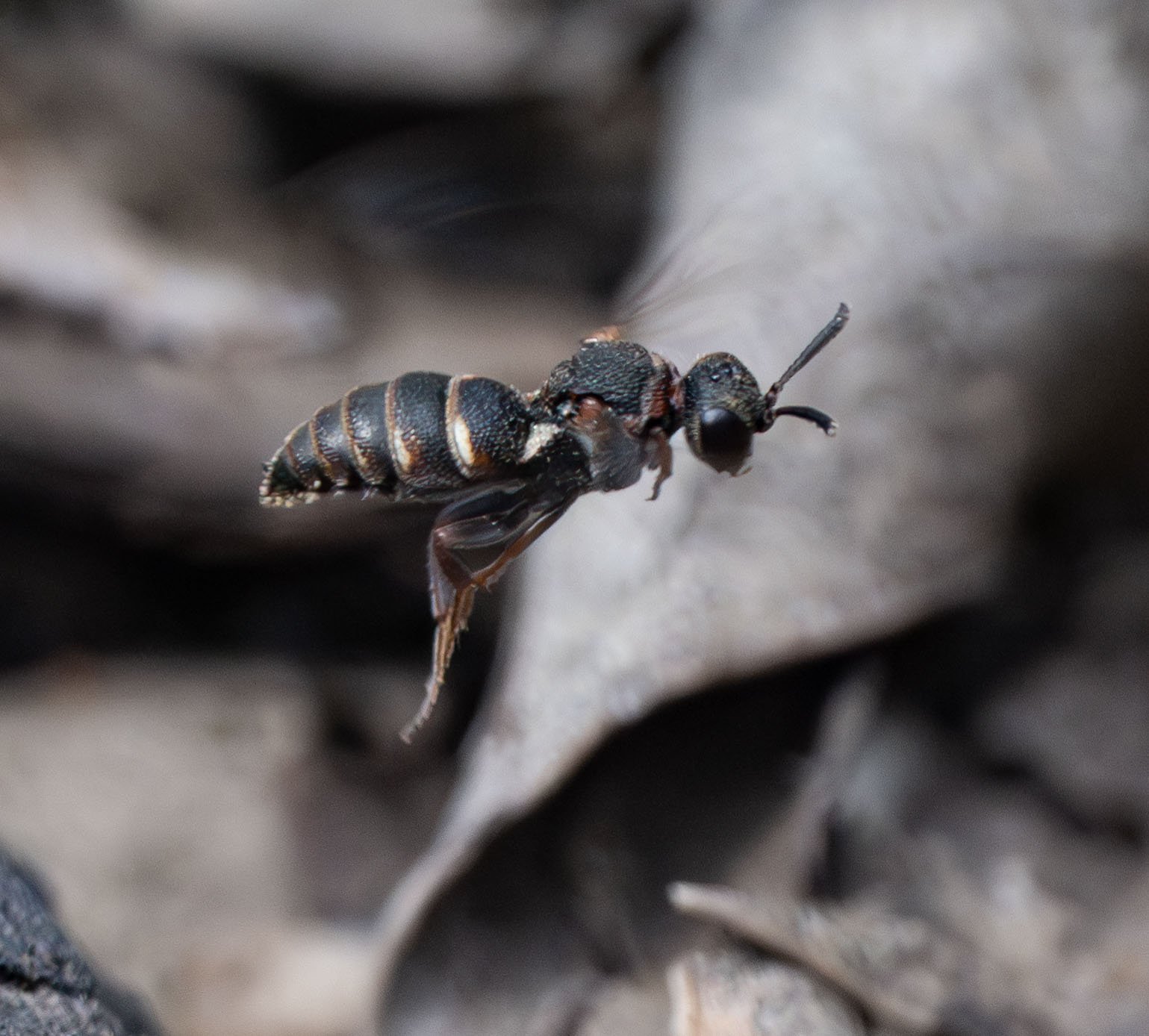
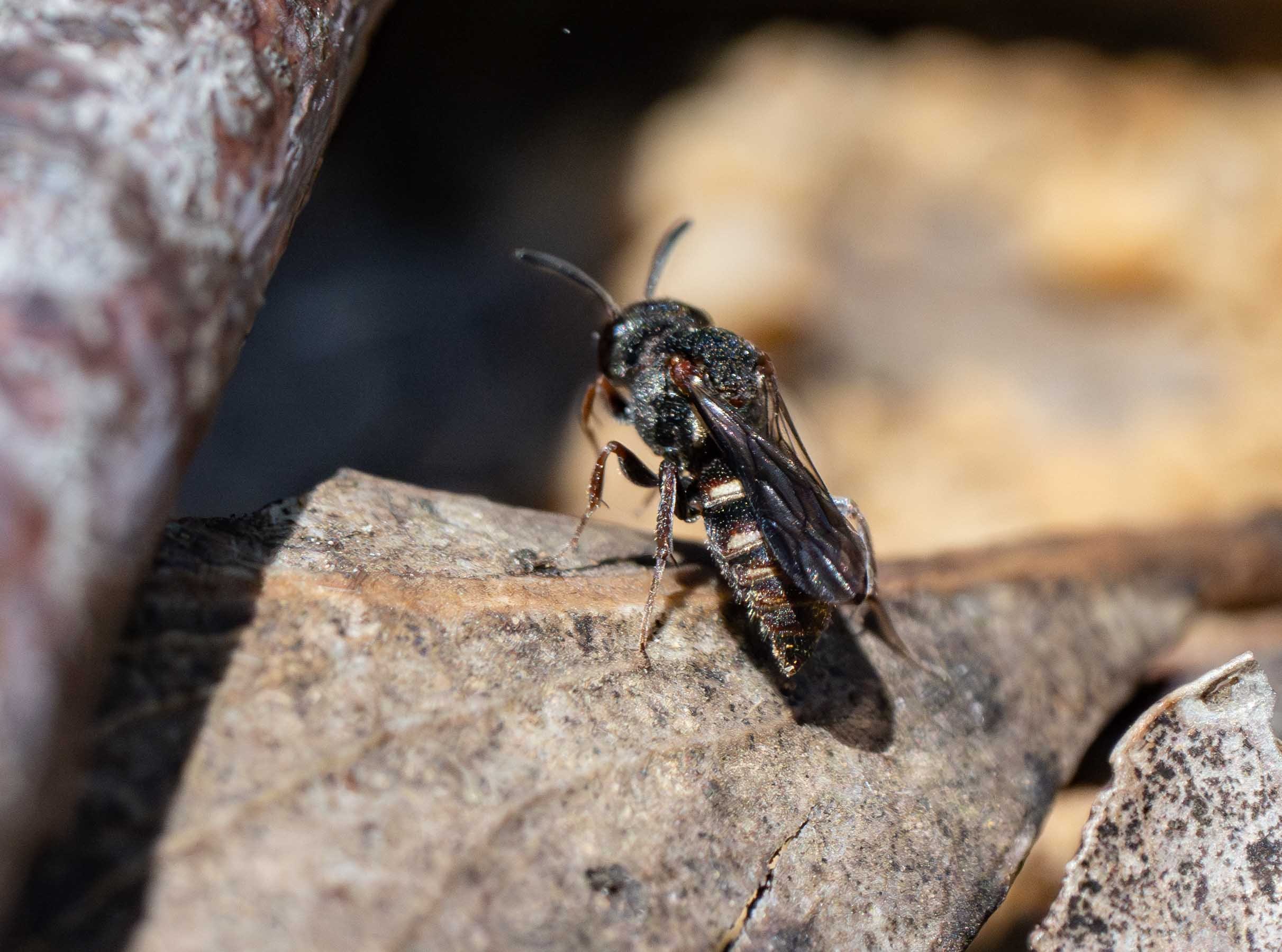
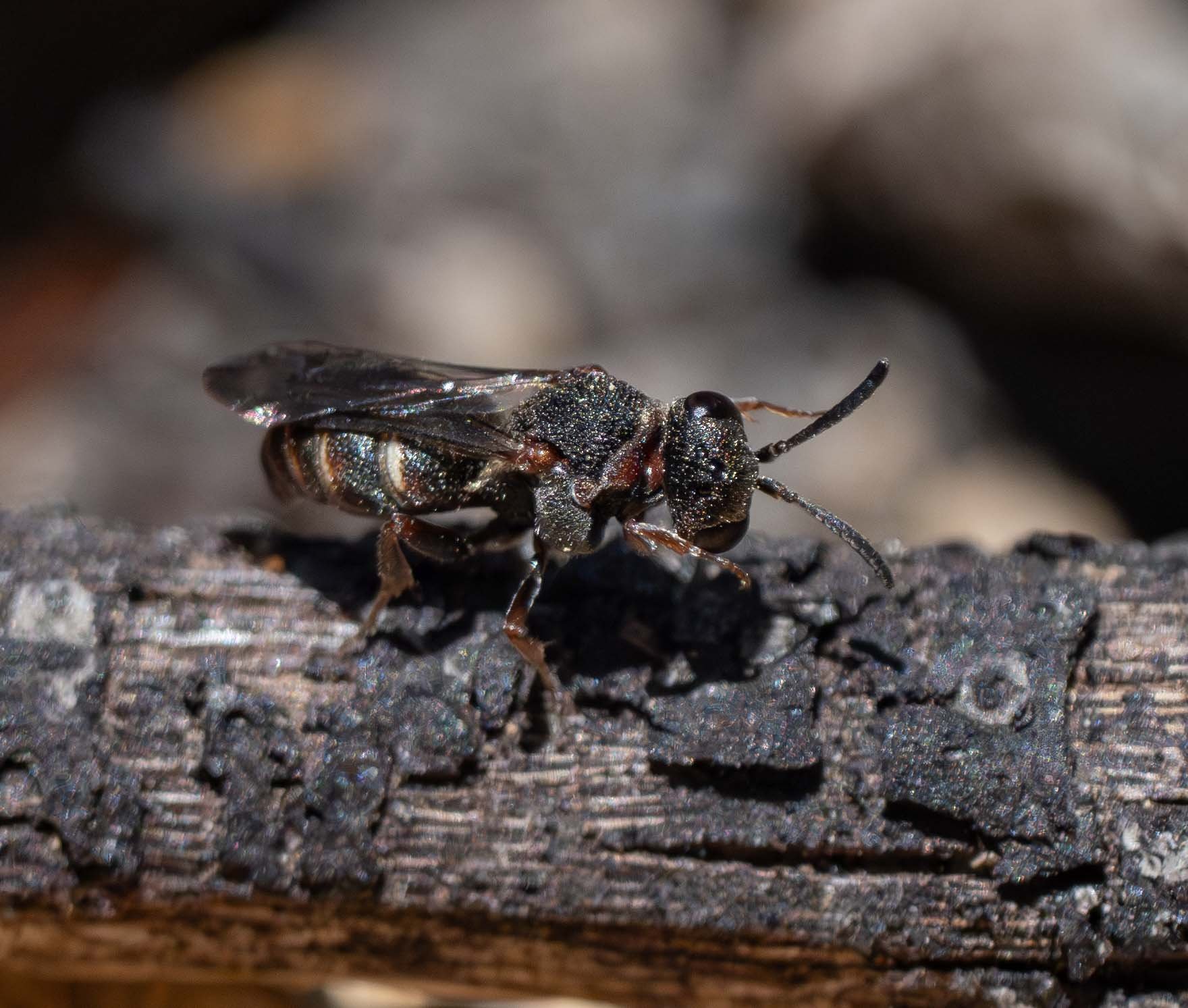
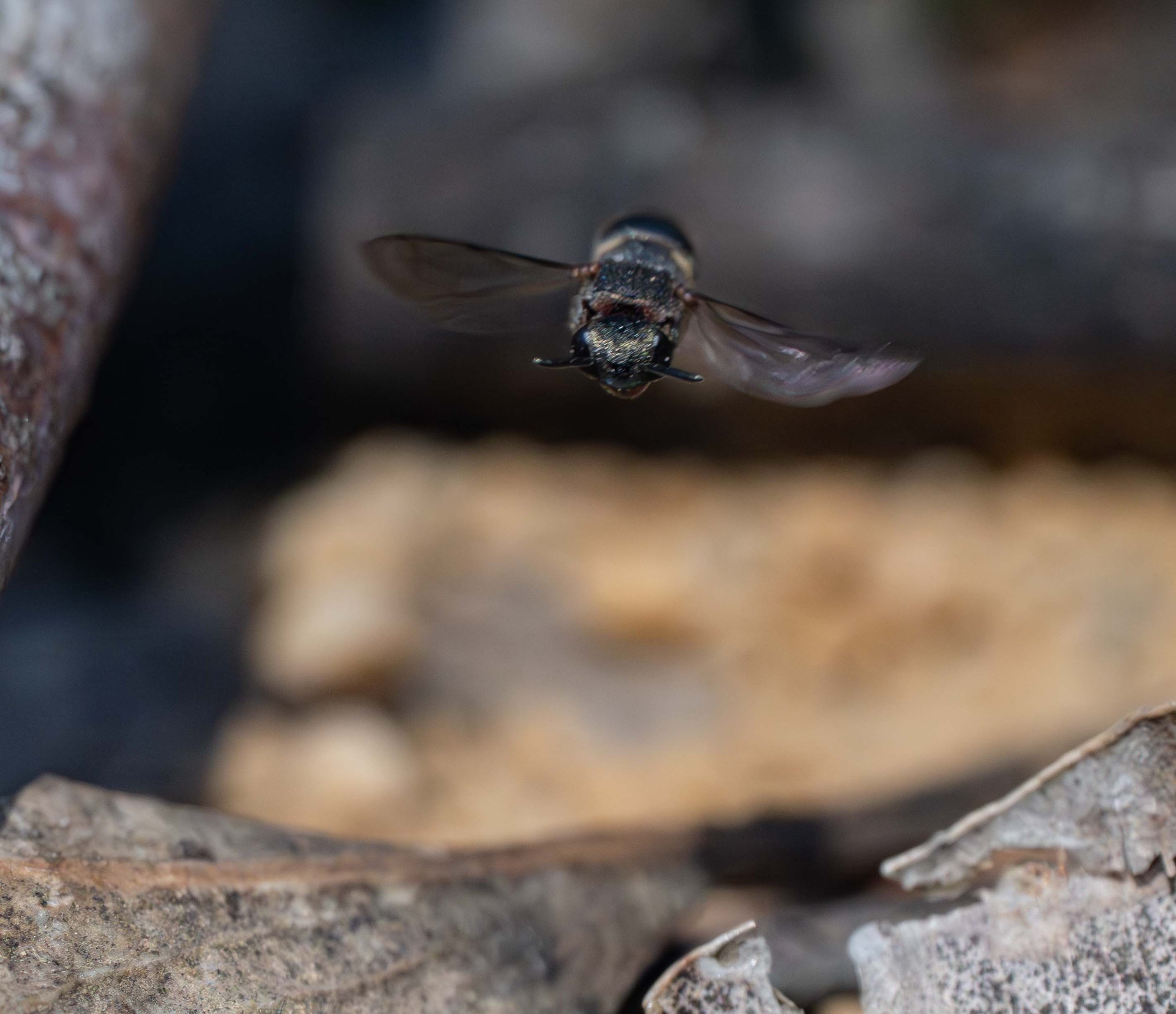
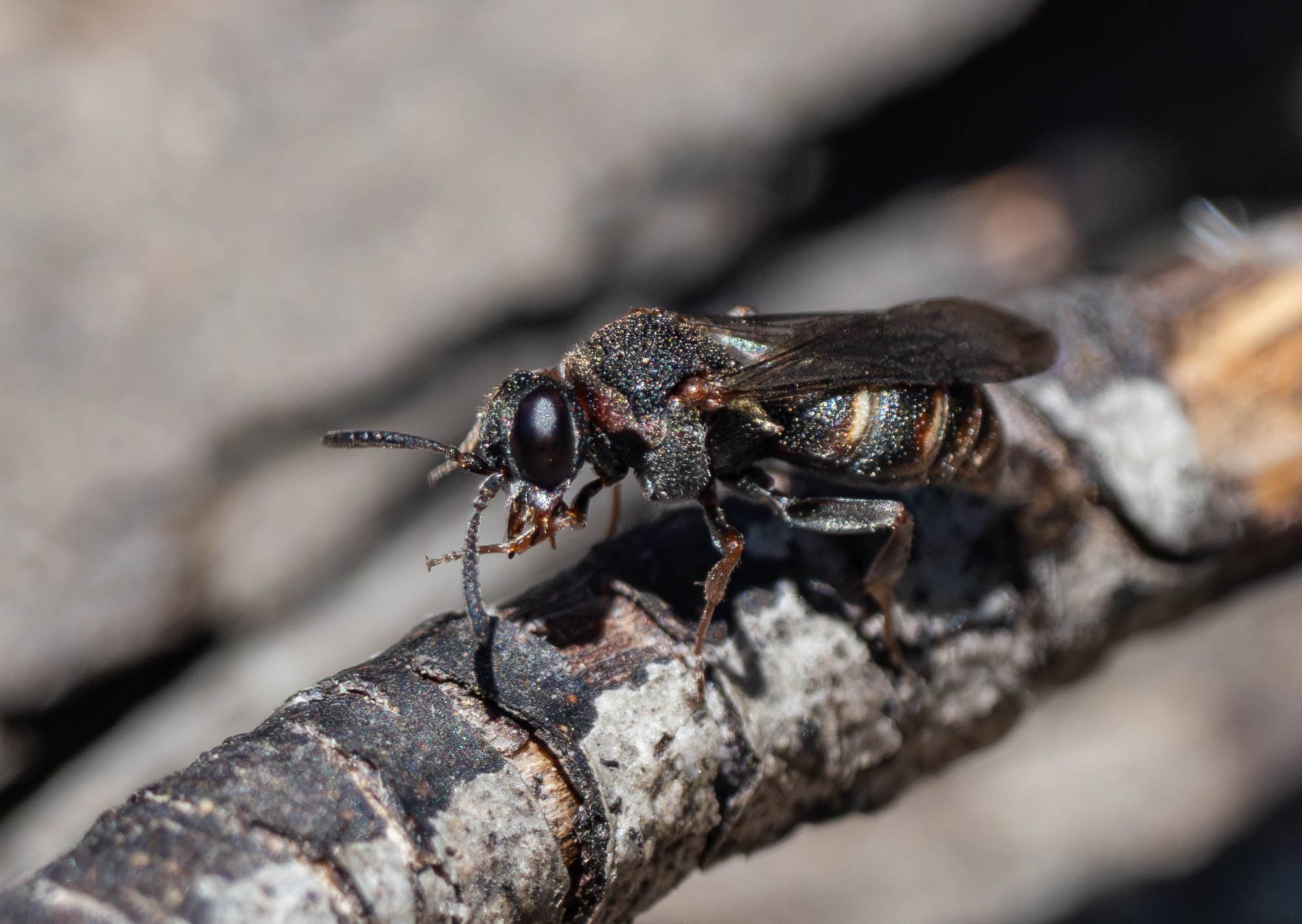
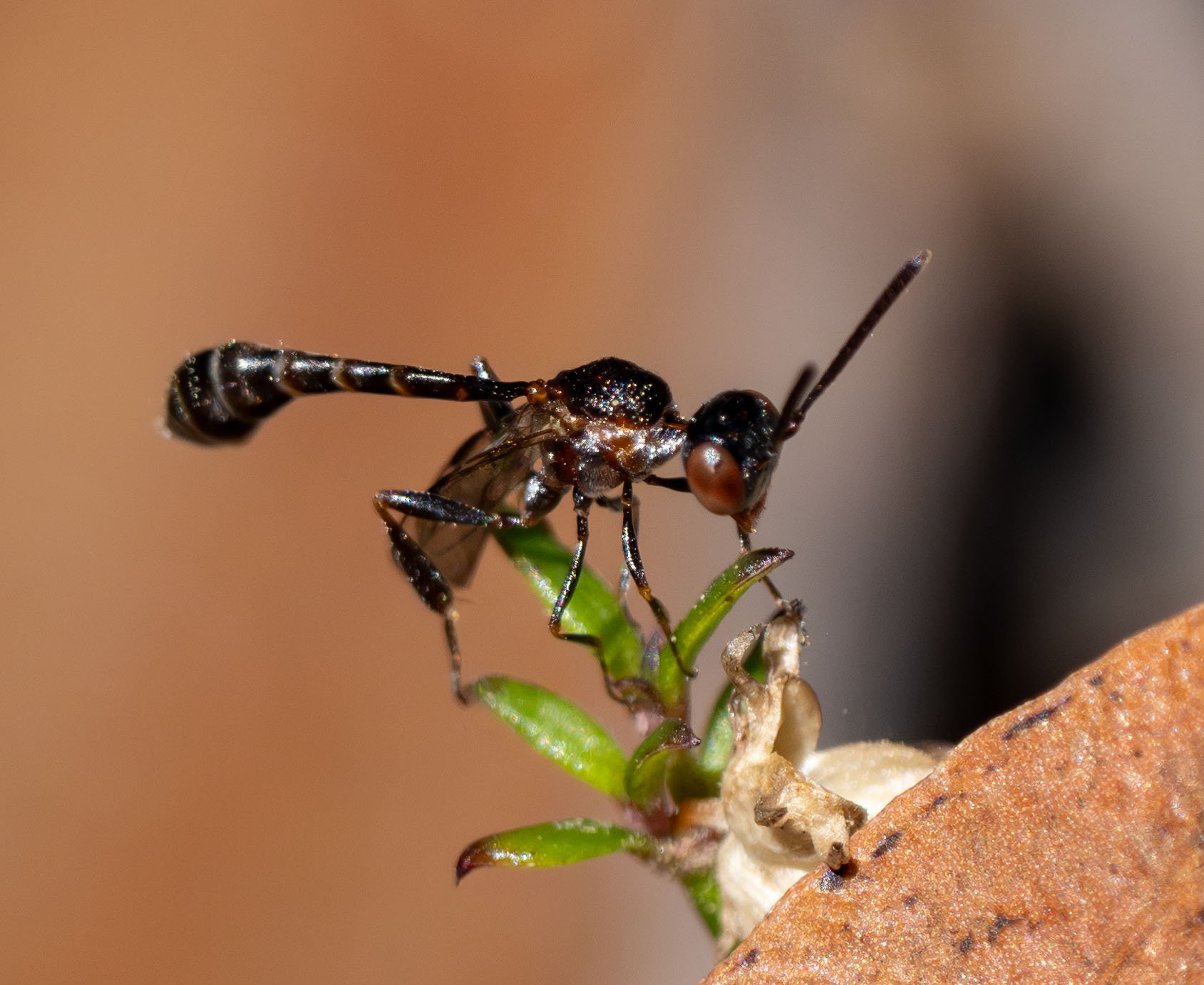
Pseudofoenus
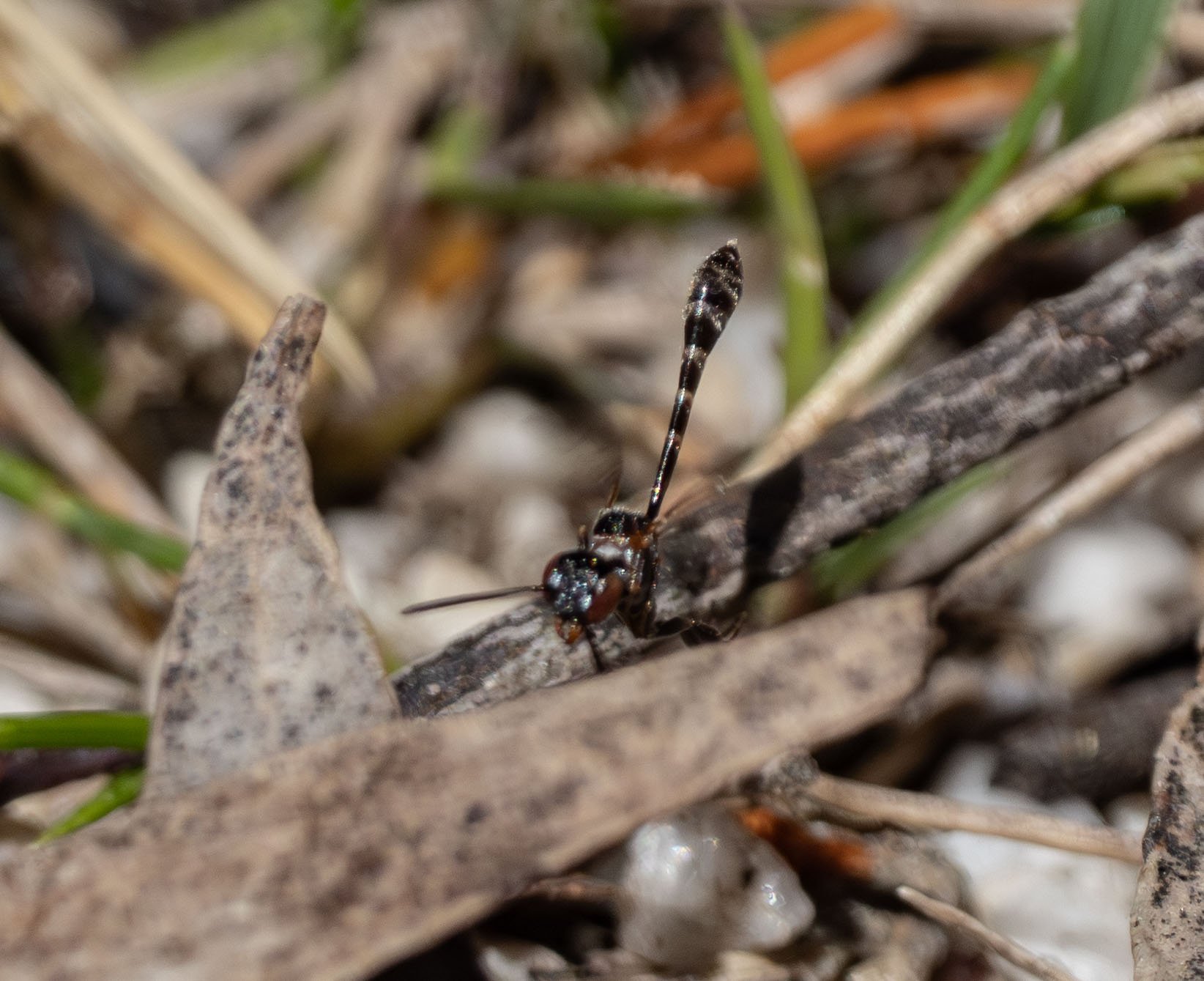
Pseudofoenus

Pseudofoenus
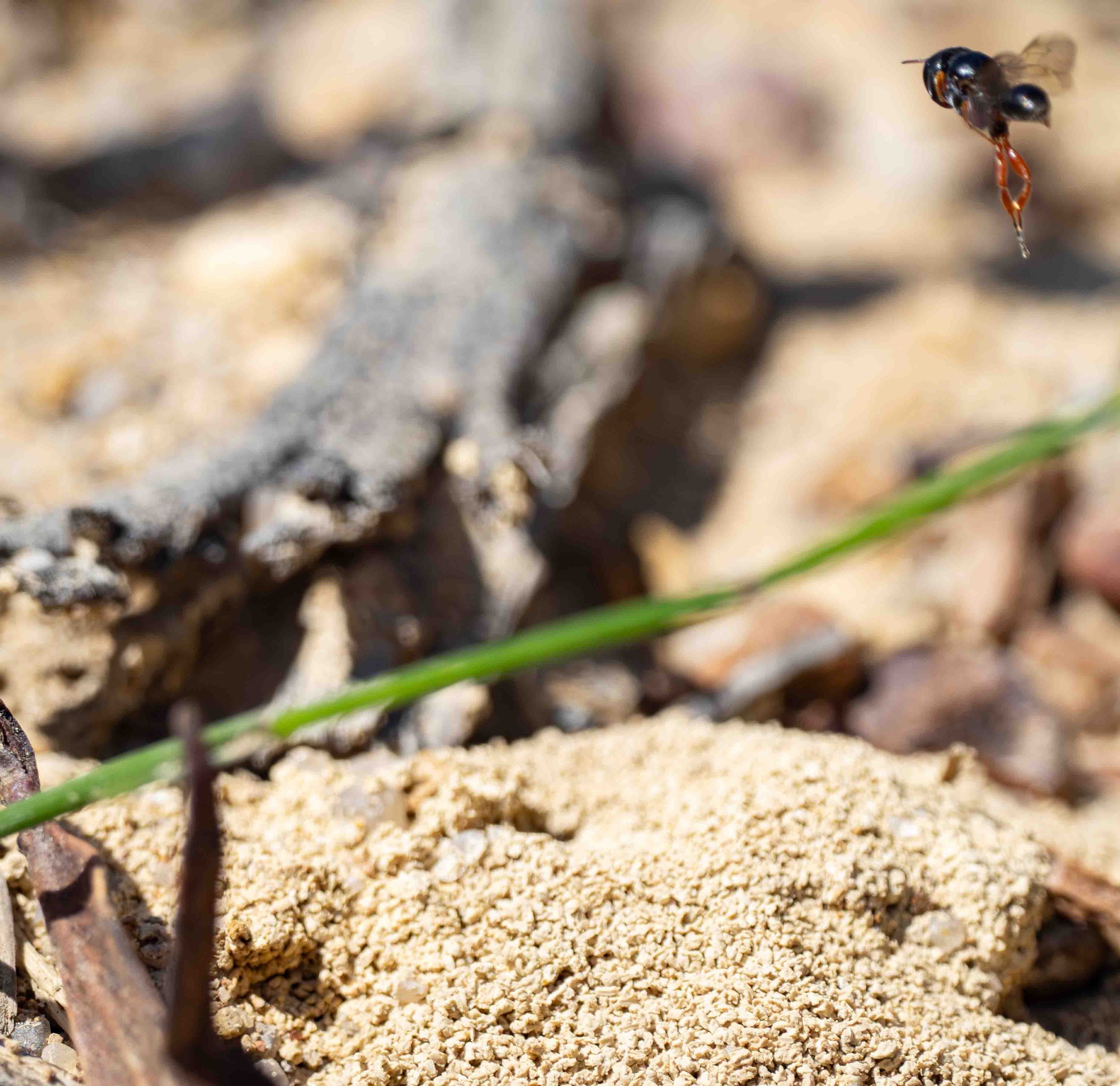
10:40am, 16th December … and I spot dozens of wasps within just a few minutes! Some nests have an obvious tumulus surrounding the opening, particularly those on the flatter ground at the bottom of the ditch.
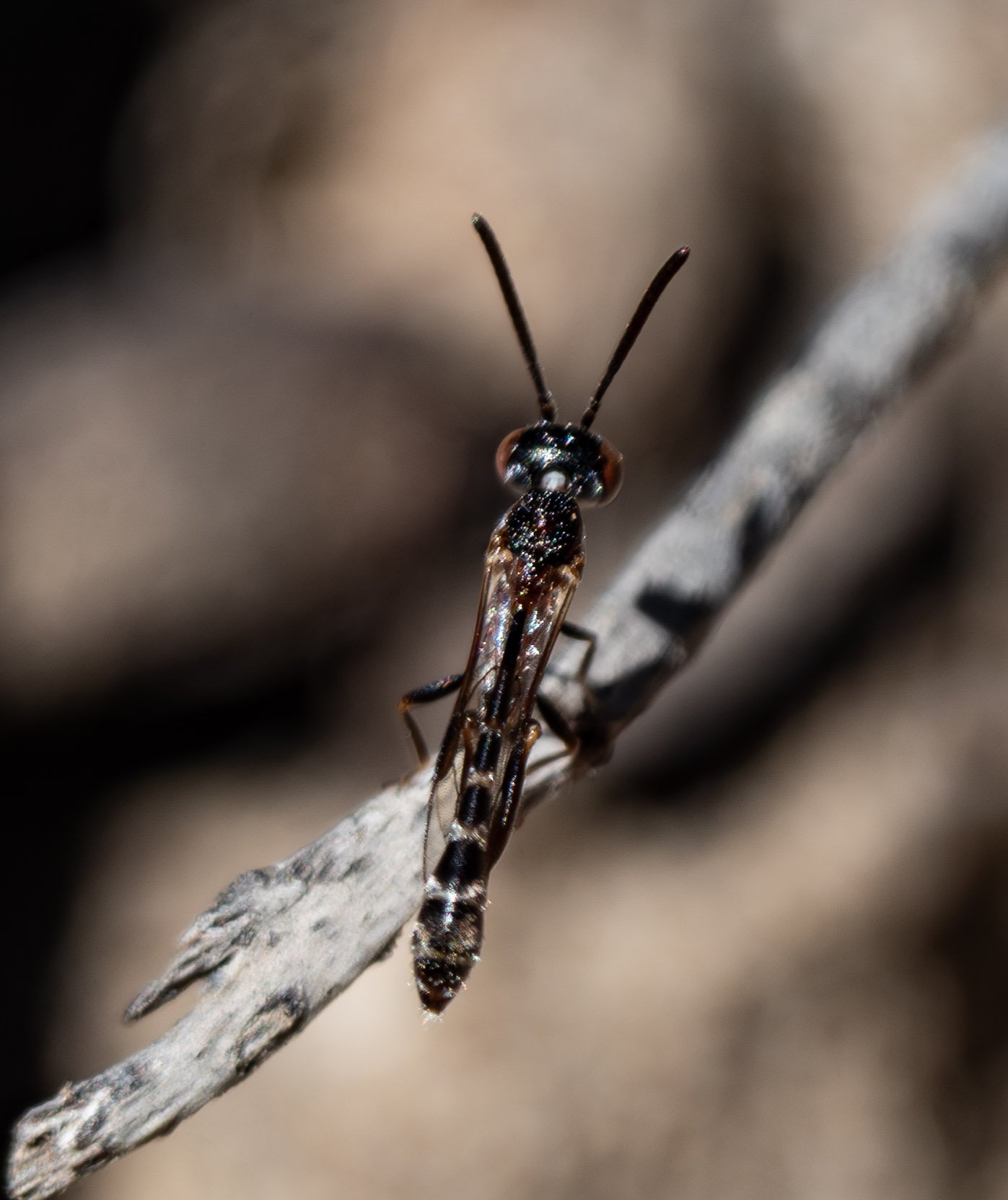
Pseudofoenus
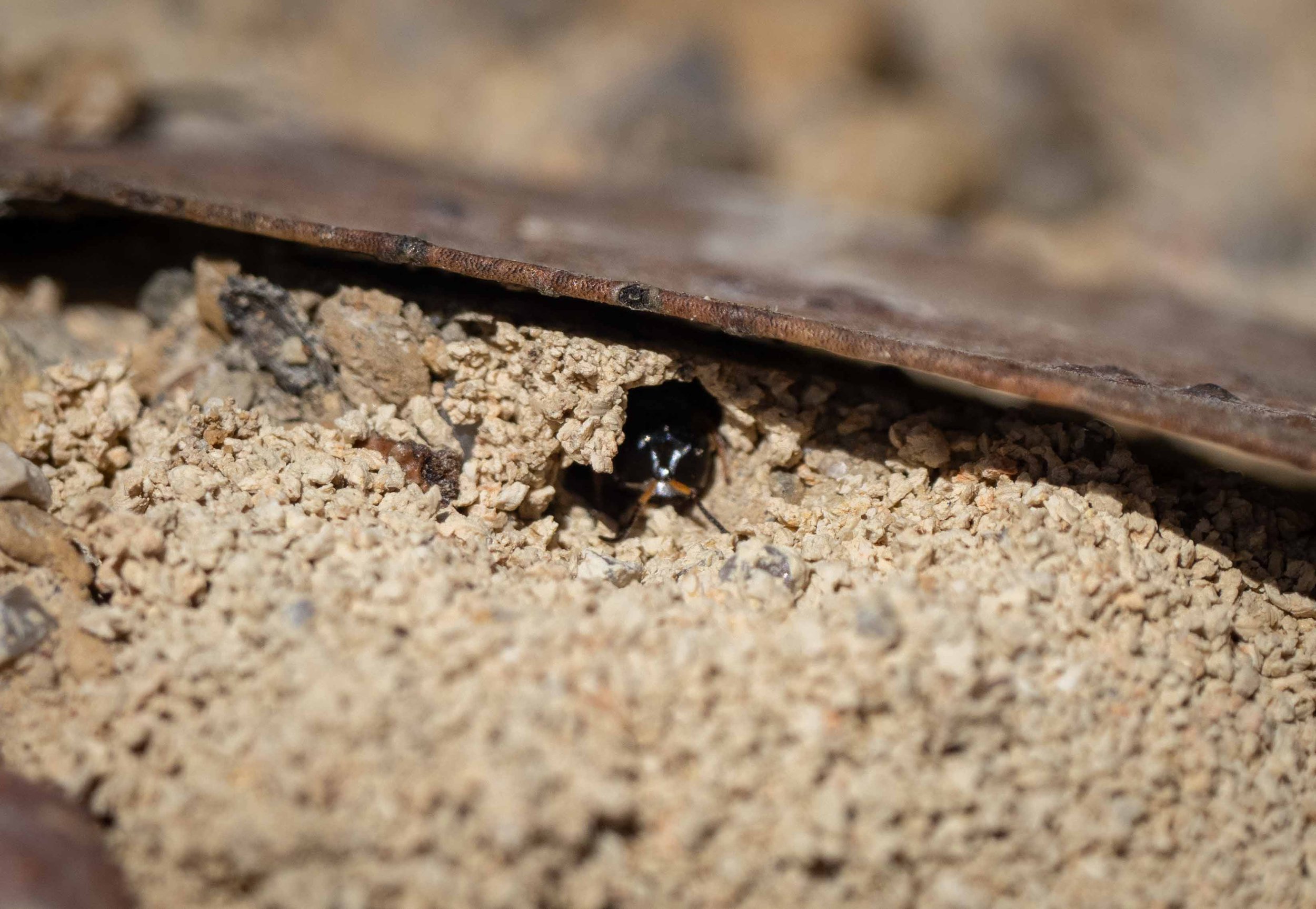
The nest openings are typically small, ragged-edged, and often hidden under an overhang. Not at all obvious … unless there’s a silvery face peeking out.

Even the owners seem to have some difficulty locating their burrows. They spend considerable time hovering and inspecting the area before quickly landing and disappearing inside.
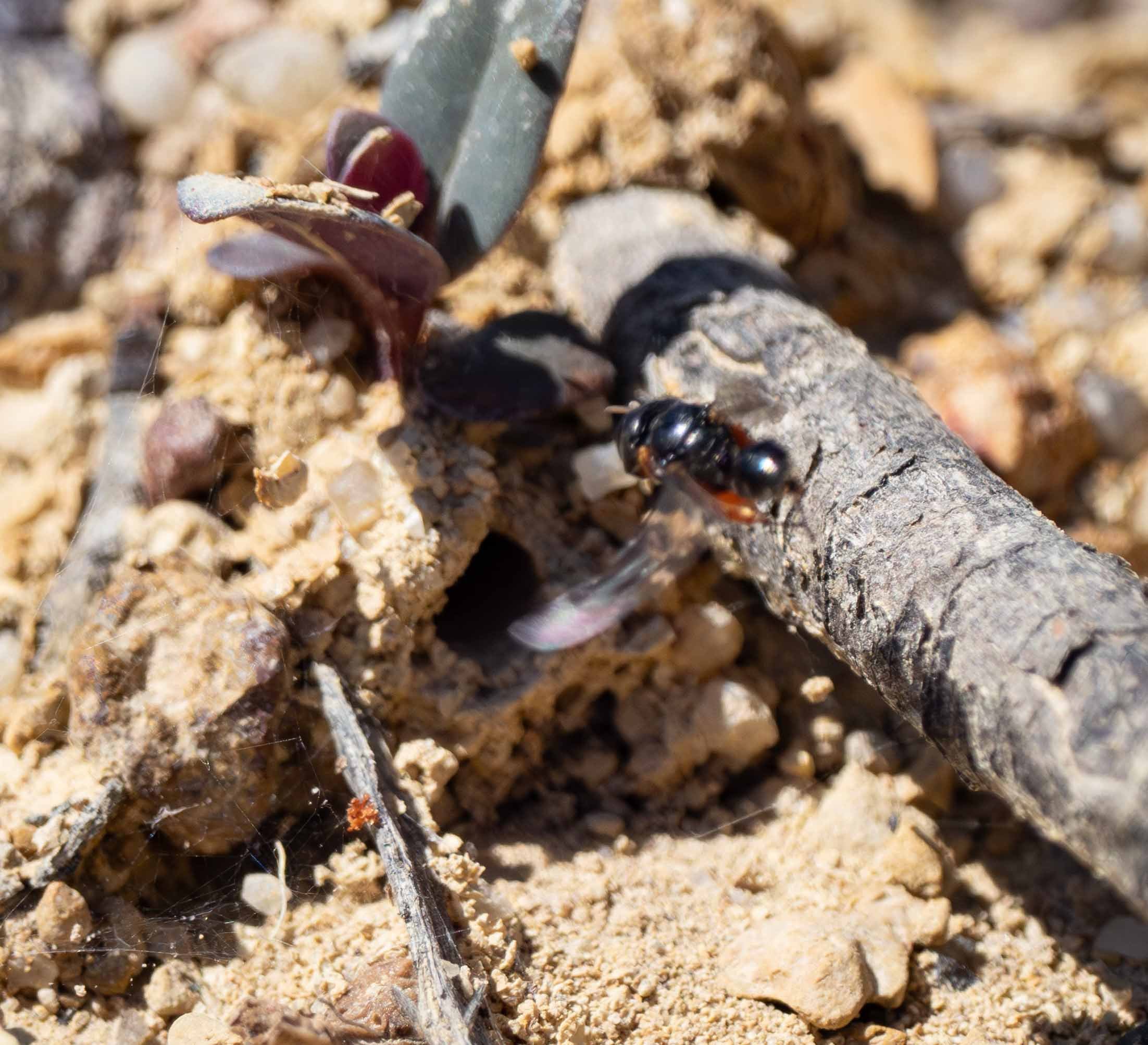
Most entrances that I spotted were vertically oriented, like this one. And open, although quite well concealed.
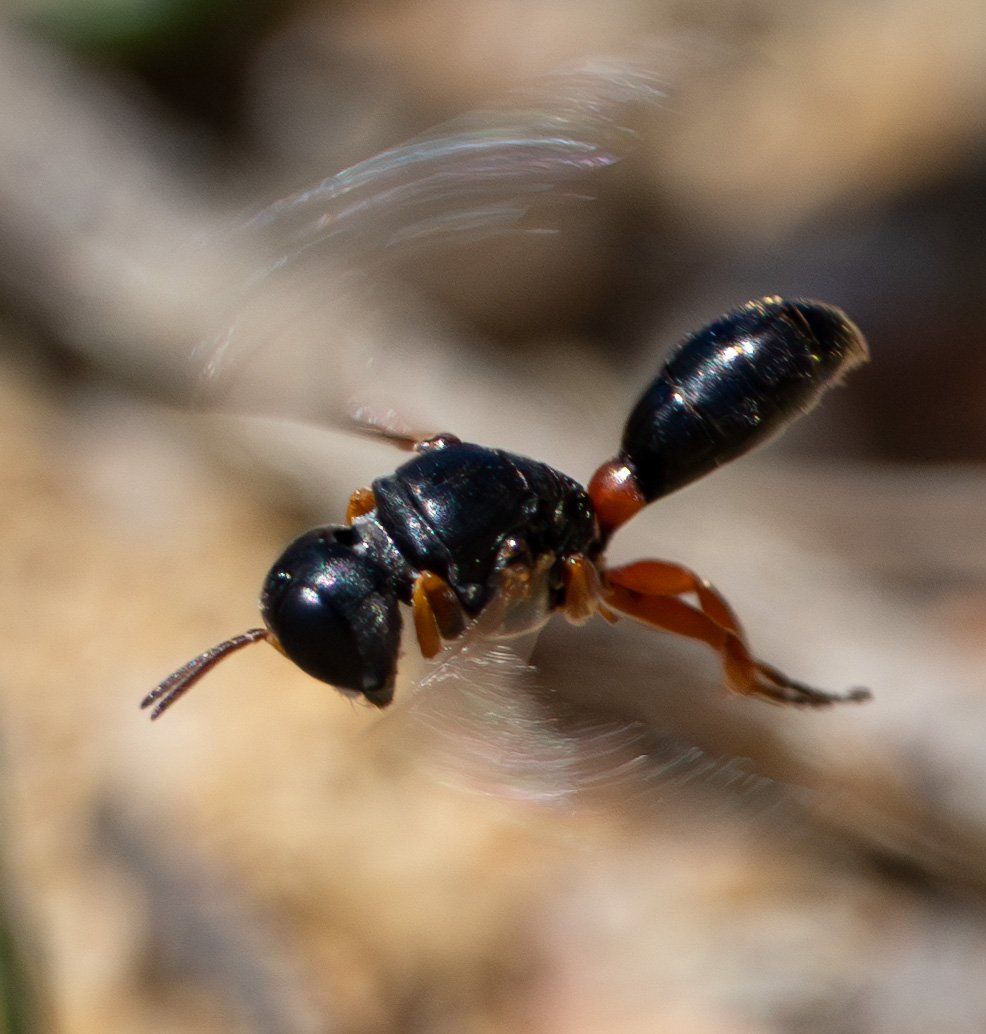
This field shot alone was enough to convince me that I’d never seen its like. The shape of the gaster is quite unlike Rhopalum or any other Crabronini I was familiar with.
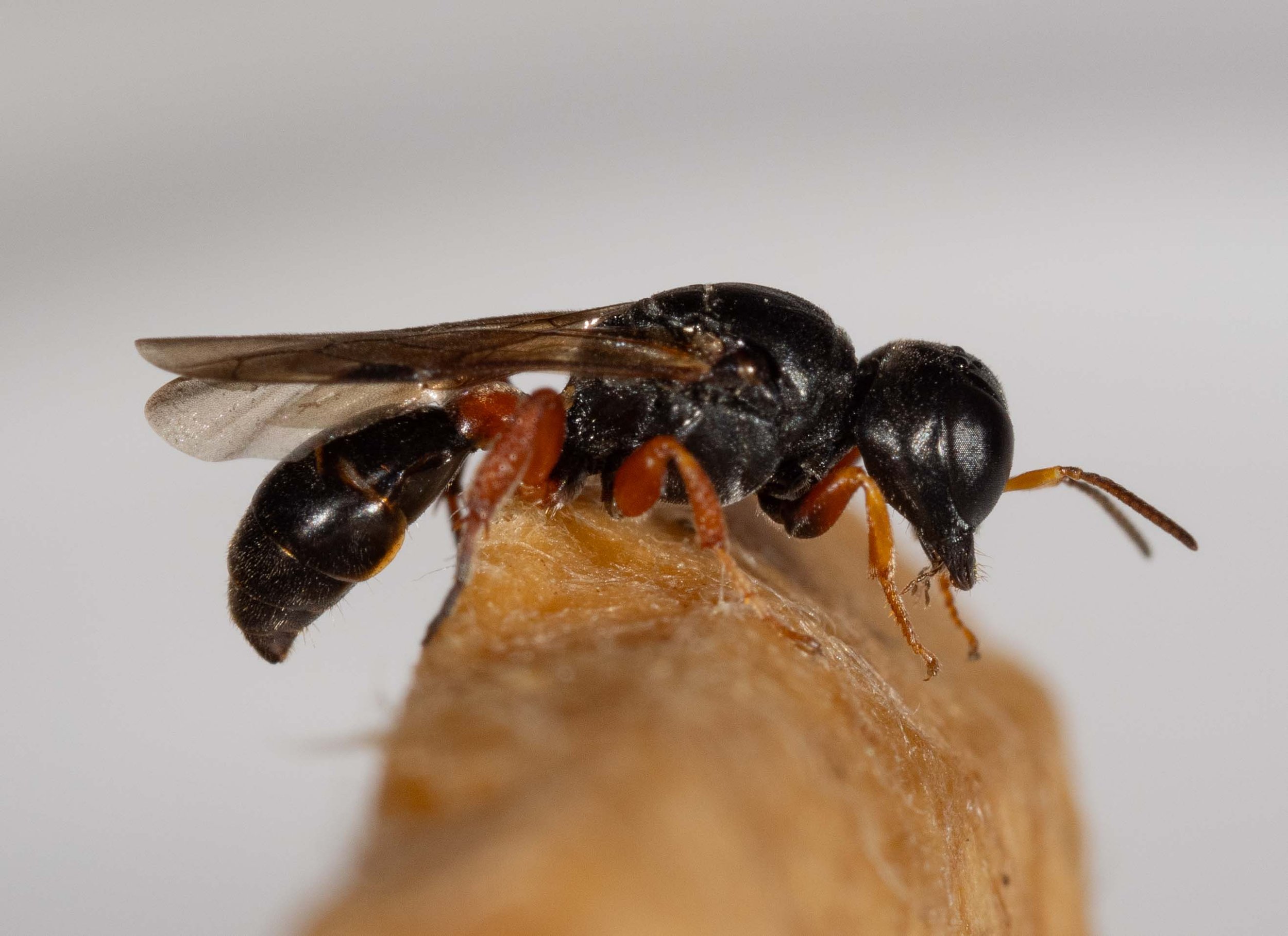
Pseudoturneria
Given how unusual the wasps were, and the large number at the nesting ground, I decided to collect a few for study. And it was well worth it. I was quickly able to confirm the genus – and it’s one very rarely photographed or collected.
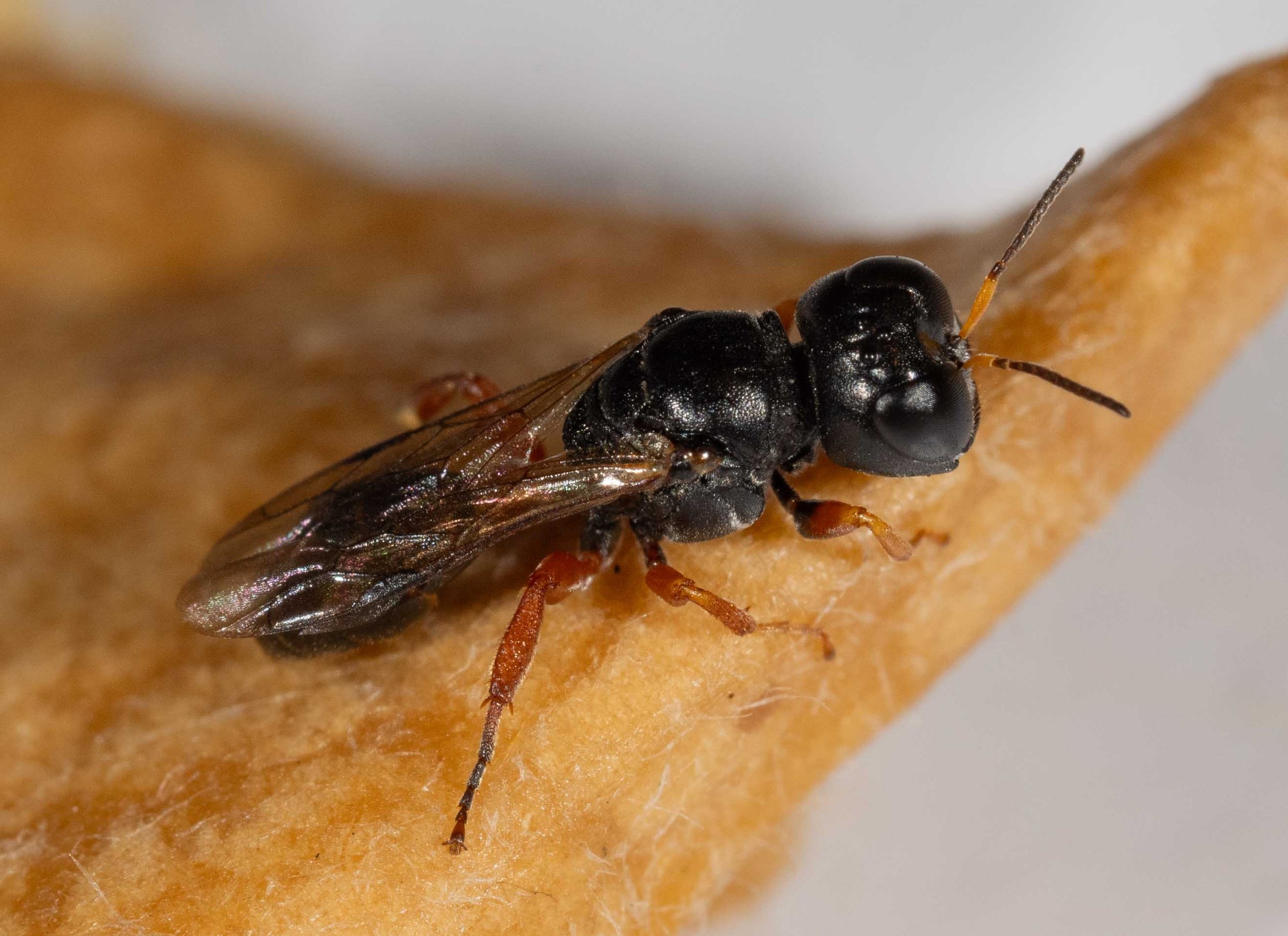
Pseudoturneria territorialis
Although unknown until 50 years ago (Leclercq 1974), this is probably the most ‘common’ species of Pseudoturneria. Even so, there are few published records and I’ve yet to find any images online.
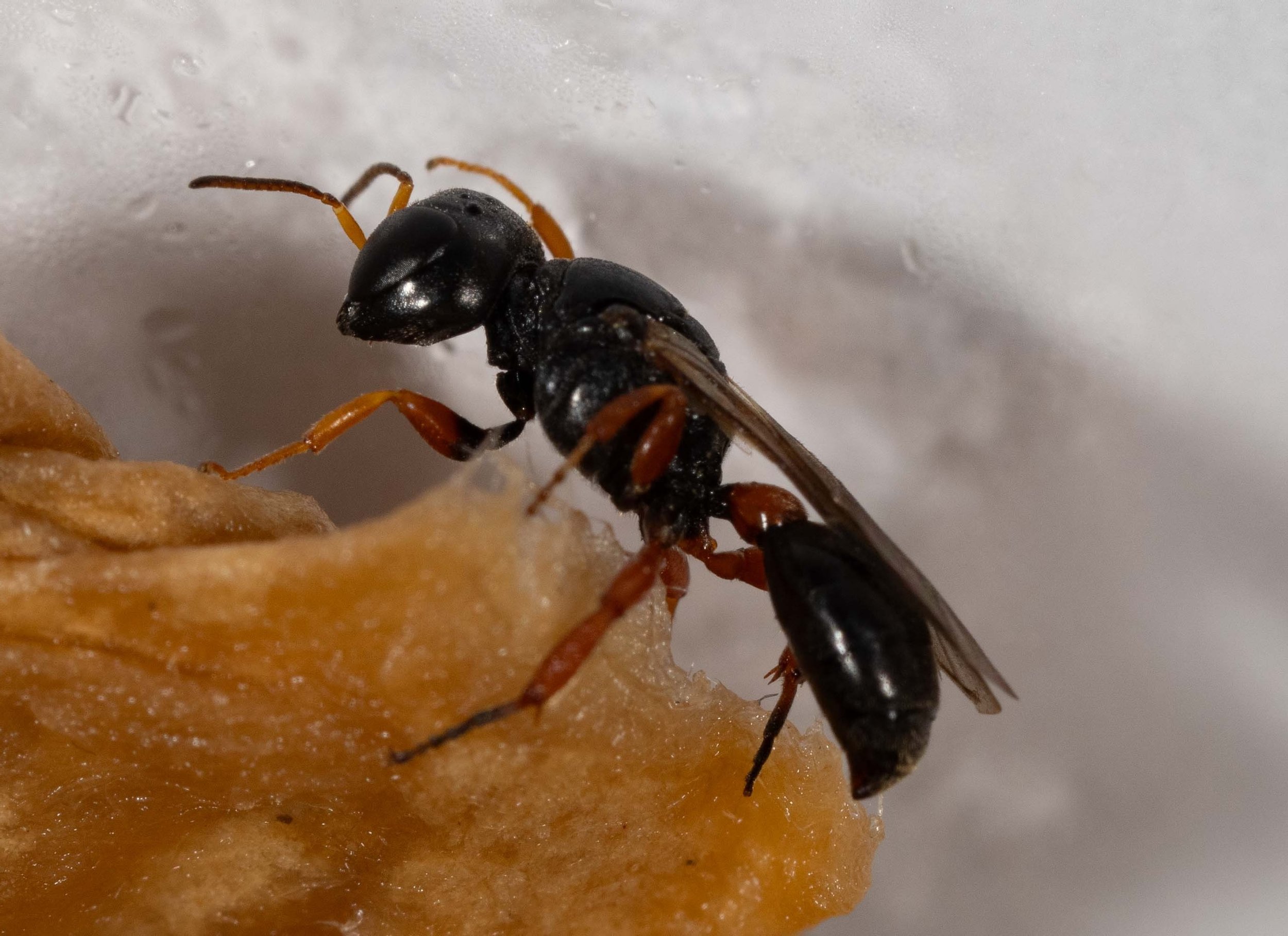
Pseudoturneria territorialis
For the logic behind my species identification, along with many more images, references, and a summary table for the 5 described species of Pseudoturneria, see the notes made in late December. The way we celebrate Xmas in the bush ;)
https://southernforestlife.net/notes/2024/pseudoturneria-crabroninae-crabronini
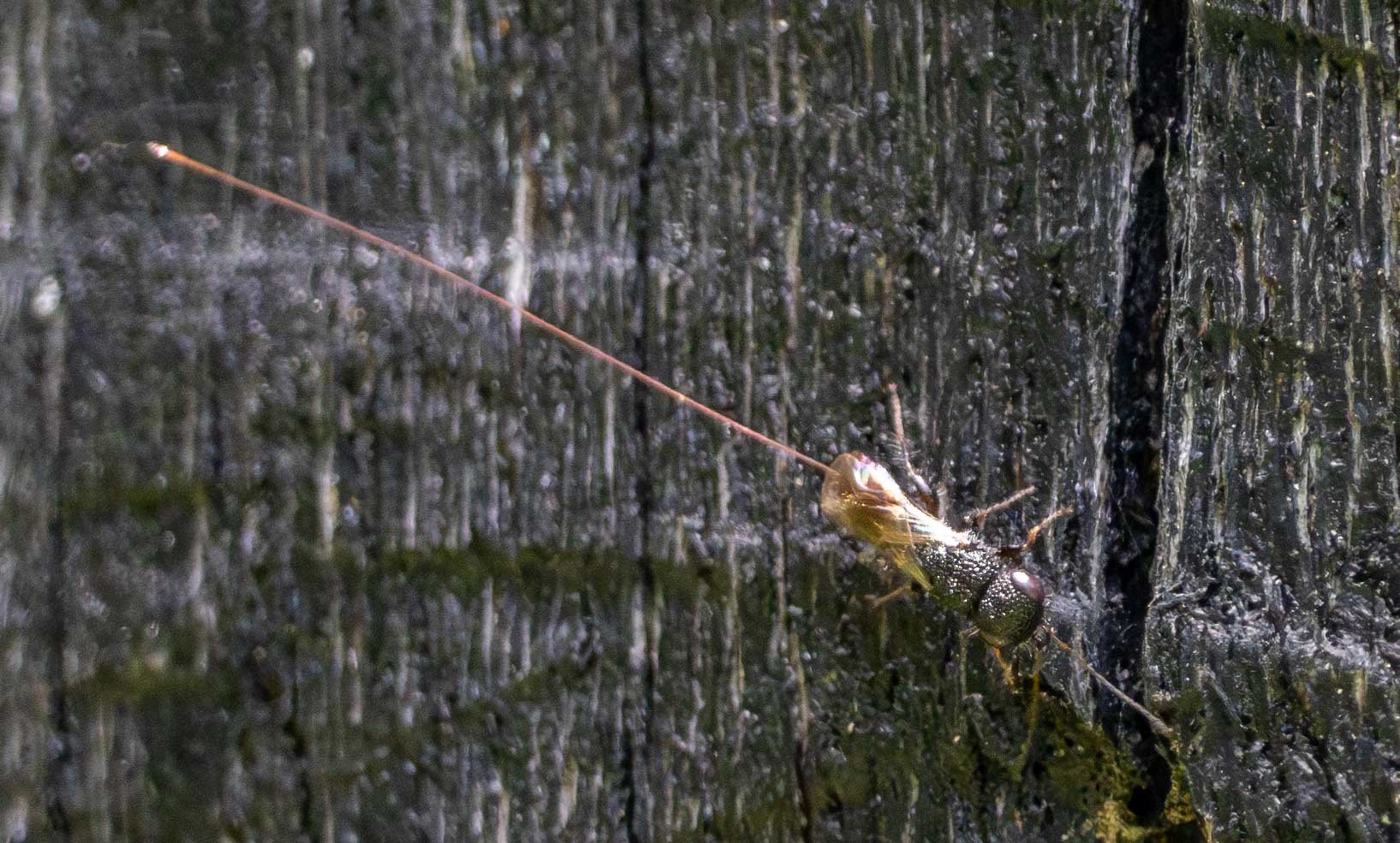
Megalyra
On an old, burnt fence post about a metre above ground. Walking quickly over the surface, seemingly attracted to the cracks and crevices.
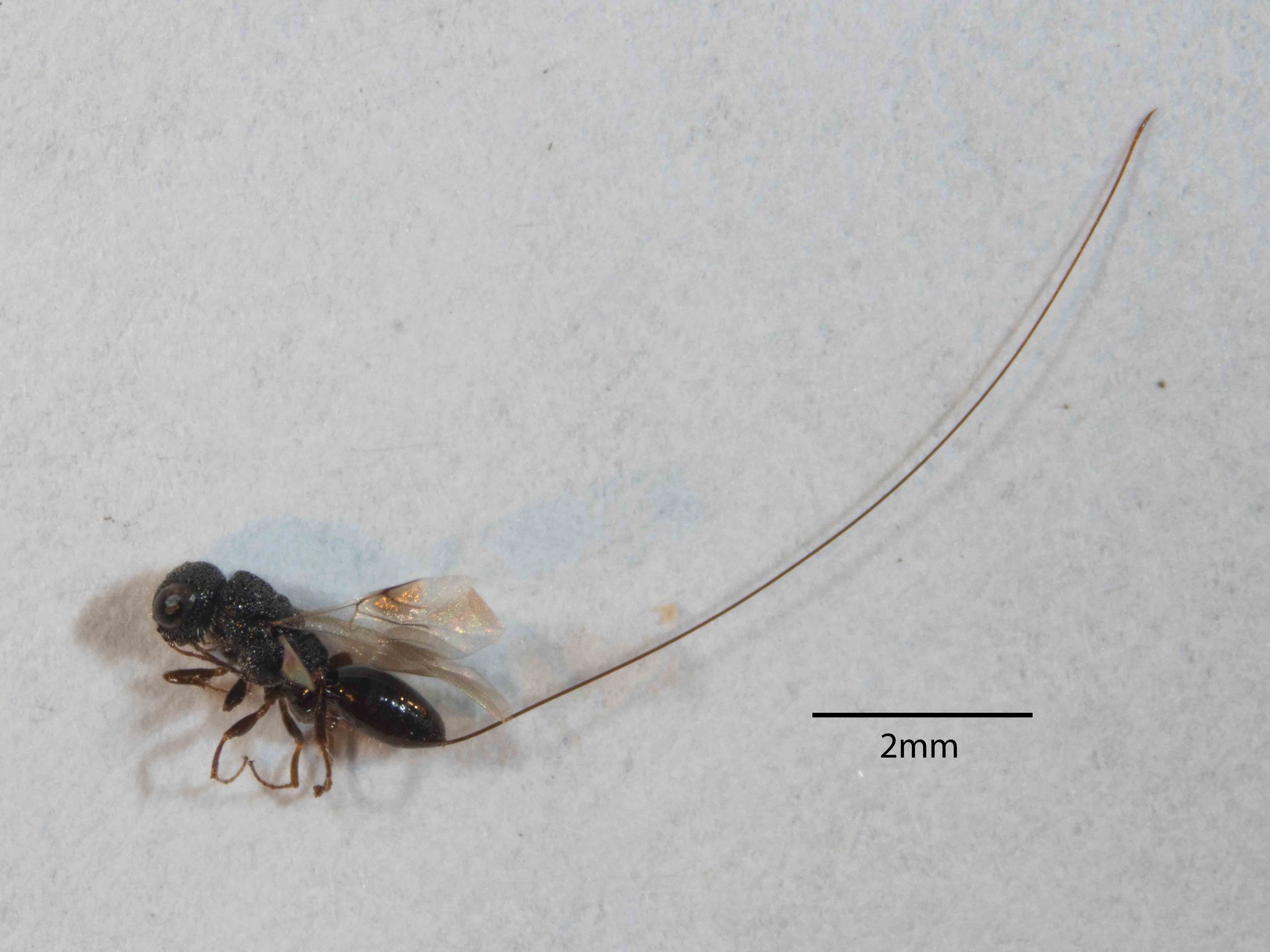
Megalyra lilliputiana
This is a small wasp (her head-body length less than 3mm)… but with an oversized ovipositor! Although not all female Megalyra species are so well-endowed, it is a trademark of the genus.
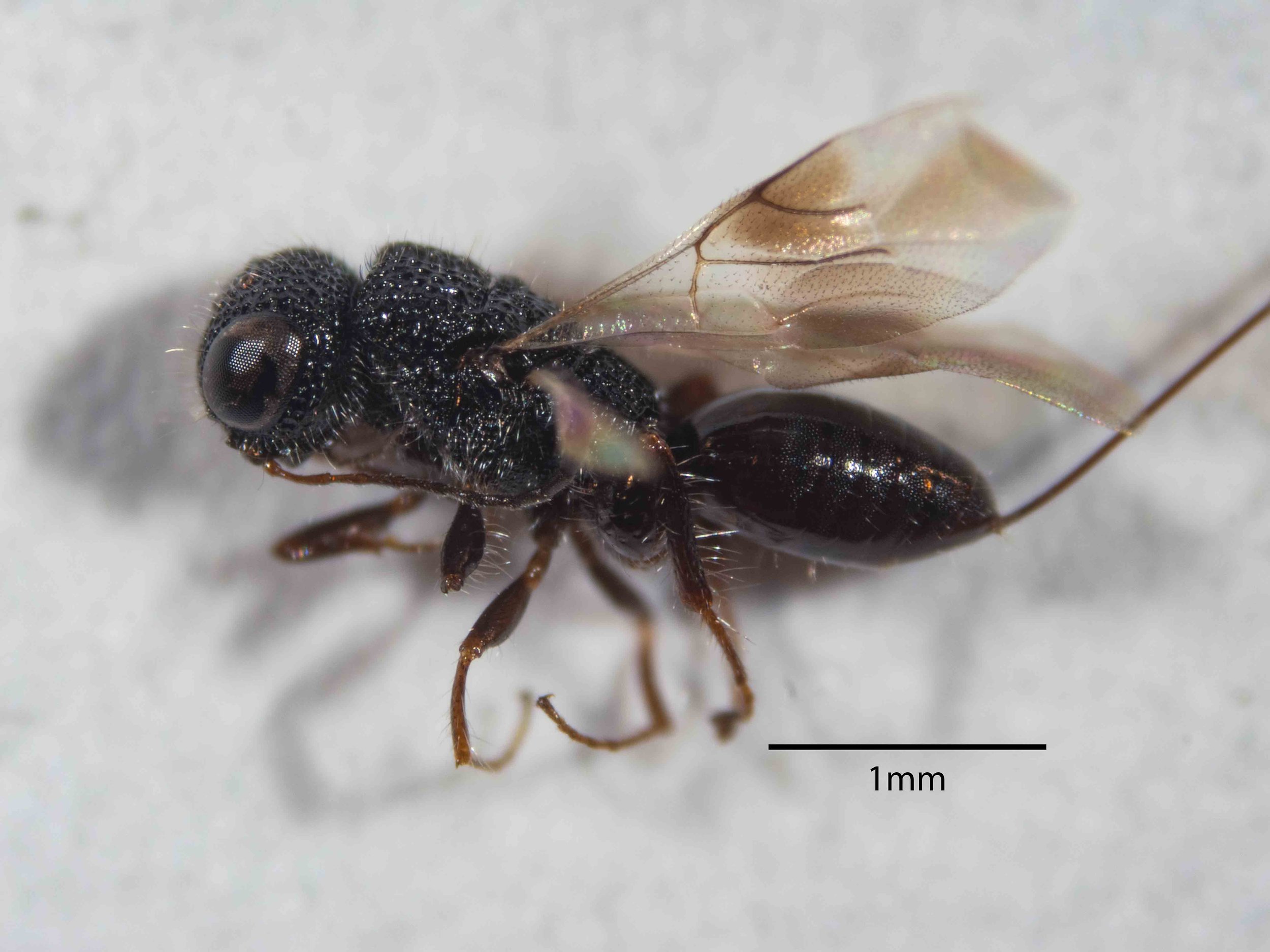
Megalyra lilliputiana
Another feature of this rather odd genus is the rather odd head shape. Large eyes. Rounded face. Antennae long and very low set. Mouth small and difficult to see, tucked away beneath the head.
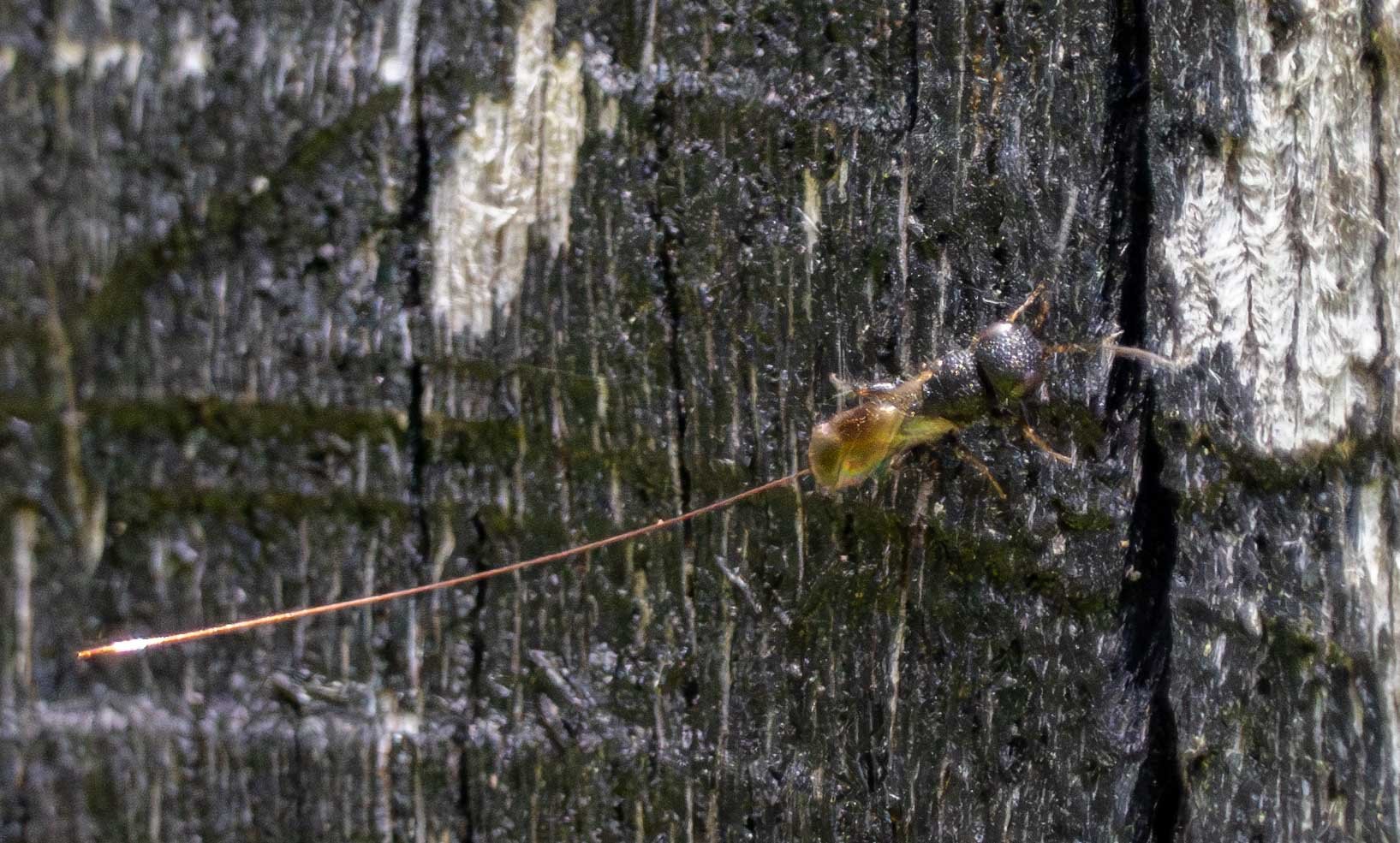
Megalyra
I might have overlooked the tiny, black-bodied wasp … but the long, hair-like ovipositor was catching the sun as she moved about.

Megalyra
She peers into a borer hole in the old fence post … and an equally small face peers out!
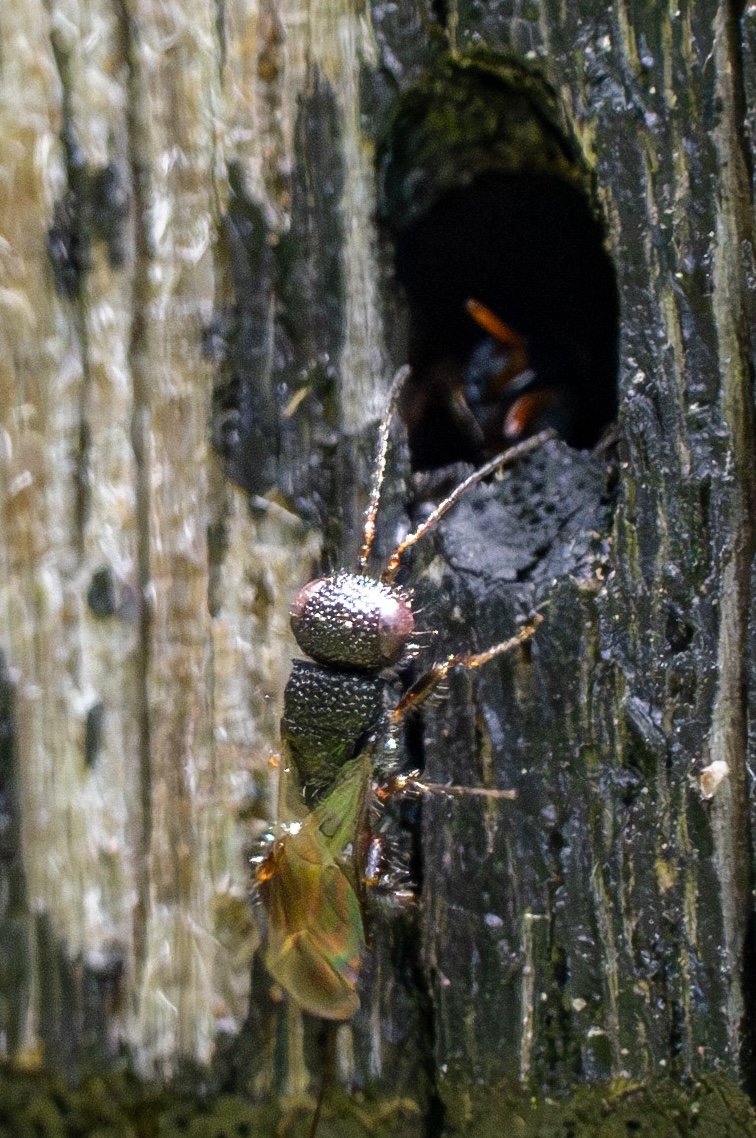
Megalyra
Who has already taken up residence in the hole? I’m tempted to think it’s a crabronid … perhaps Arpactophilus (Pemphredoninae), based simply on the widely spaced eyes and general colouration. But it would simply be a guess. I have only this single photo to document the parasite’s apparent interest in the wood dweller.
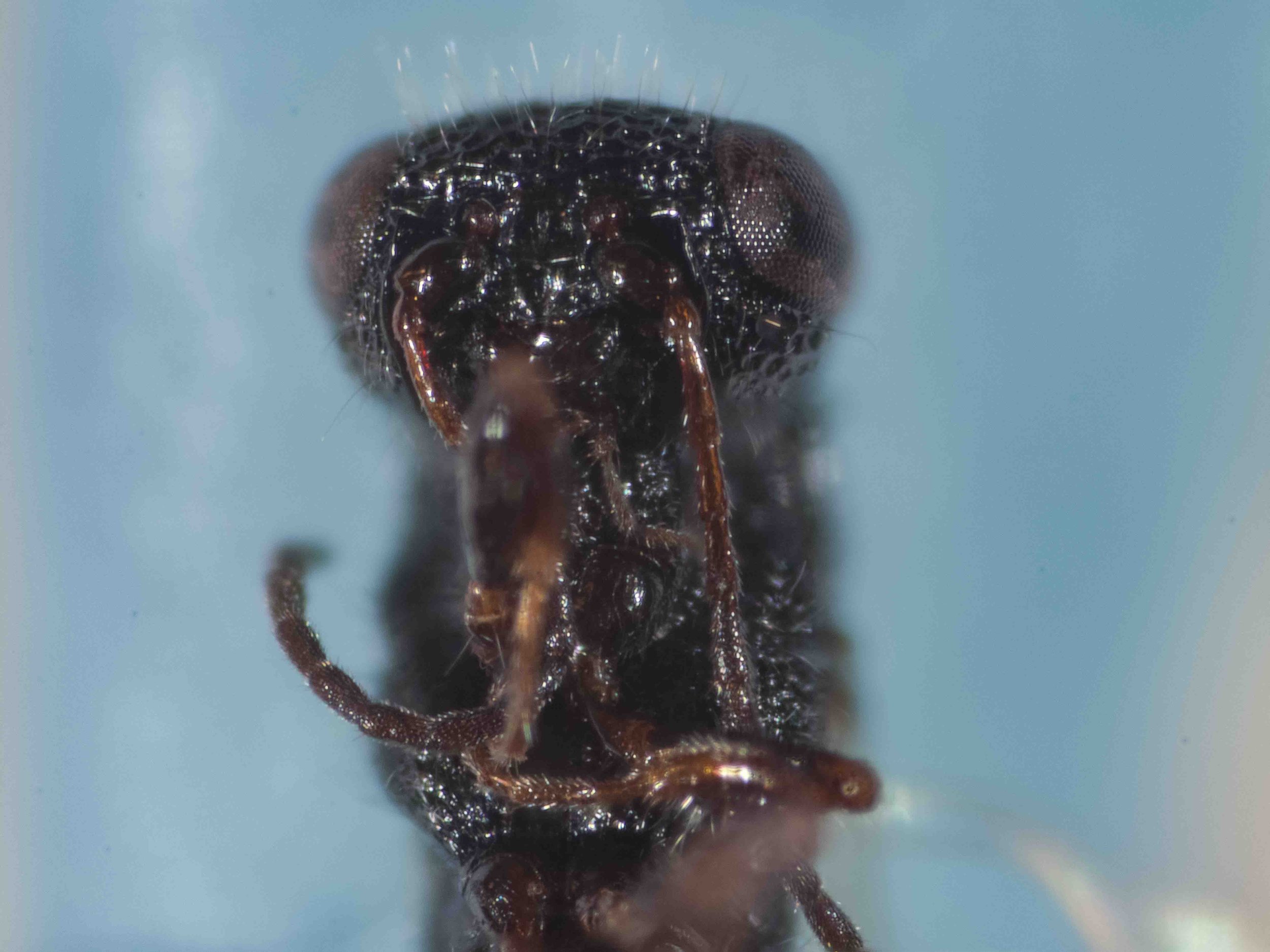
Megalyra lilliputiana
A ventral view of that unique little face.
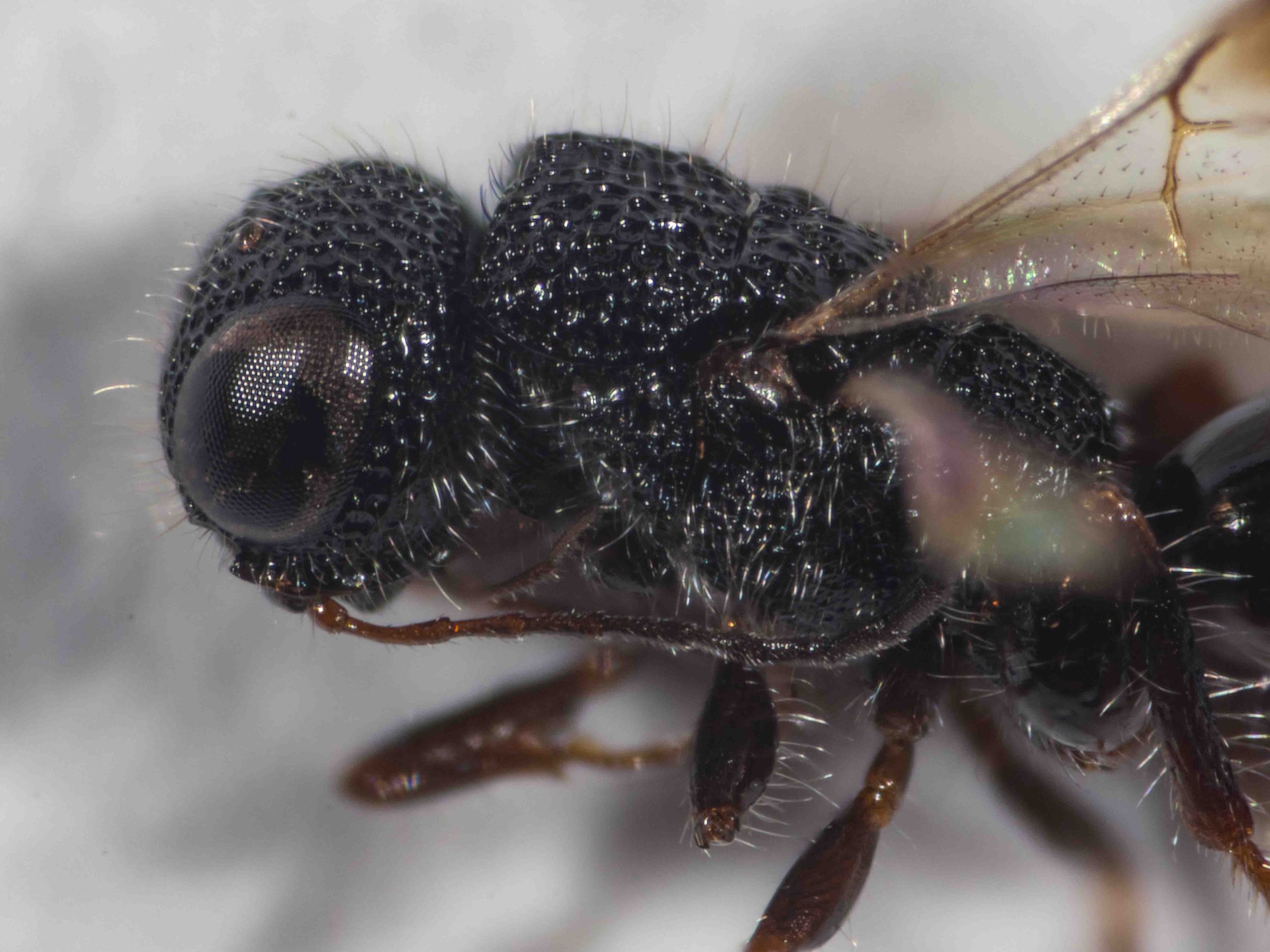
Megalyra lilliputiana
As is my standard practice, I recorded the logic behind my species identification on a notes page … a ‘behind-the-scenes’ section of our website.
https://southernforestlife.net/notes/2024/megalyra-lilliputiana
The page includes annotated images plus a summary of the 22 described species in this genus, based on my reading of Shaw’s 1990 work.




























































